The Royal Palace is located in Cambodia’s capital city of Phnom Penh and it is considered the pearl in the heart of Phnom Penh. The Phnom Penh Royal Palace compound includes seven (7) Khmer-style ornate buildings sitting amongst manicured gardens surrounded by a yellow wall along the Tonle Sap River.
The Palace serves as the King’s residence, a venue for court ceremonies and a symbol of the Kingdom of Cambodia. The palace was built in starting in 1866 when the capital was moved to Phnom Penh and the last building was completed in 1953.
All of the buildings have colorful tiled roofs with gold colored decorative end caps similar to the ones seen in Thailand. The gables of the builds are elaborately designed with gold leaf that really enhances the look of the buildings and the entire palace compound. Several of the buildings are capped with tall spires that are covered with colored tiles and gold leaf. The spires greatly increase the height of the buildings and make the palace compound much more impressive.
The largest of the buildings is the Throne Hall which is the primary audience hall of the King. It is used for coronations and diplomatic official meetings. The building is 30 meters wide by 60 meters long. One of the most interesting details is that the roof has small gray statues appearing to hold up the roof overhang. Almost all of the building has this same statue.
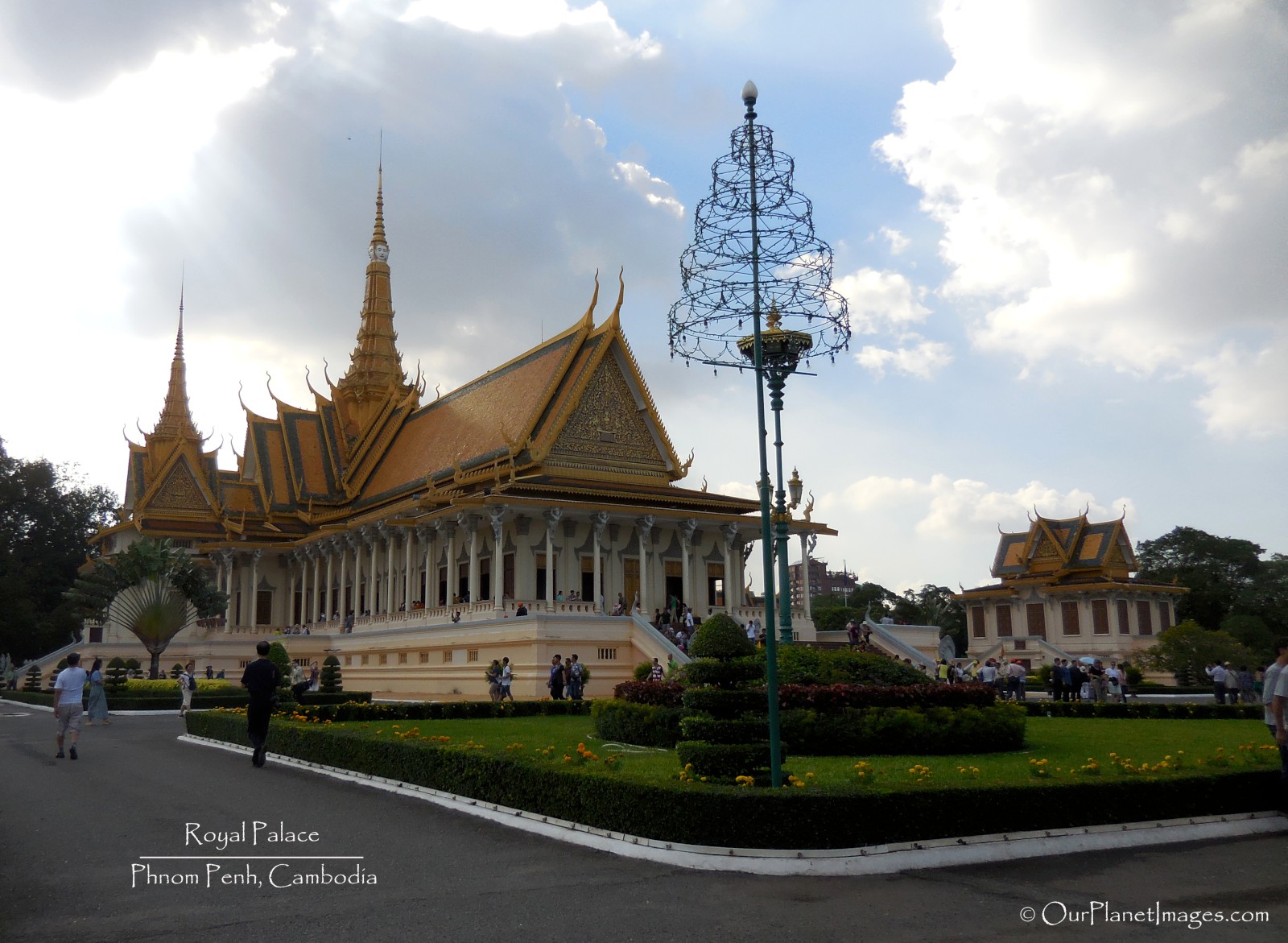
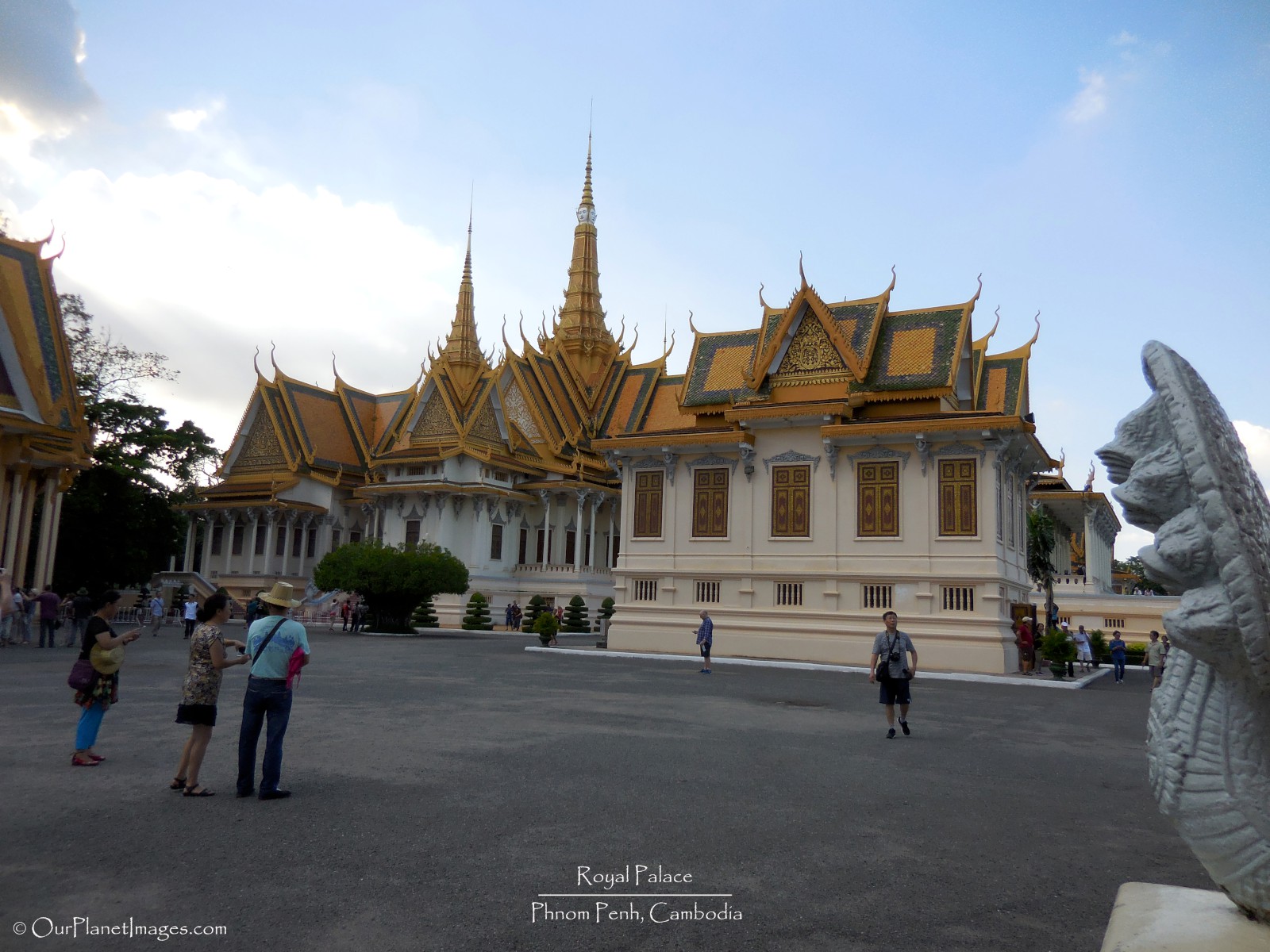
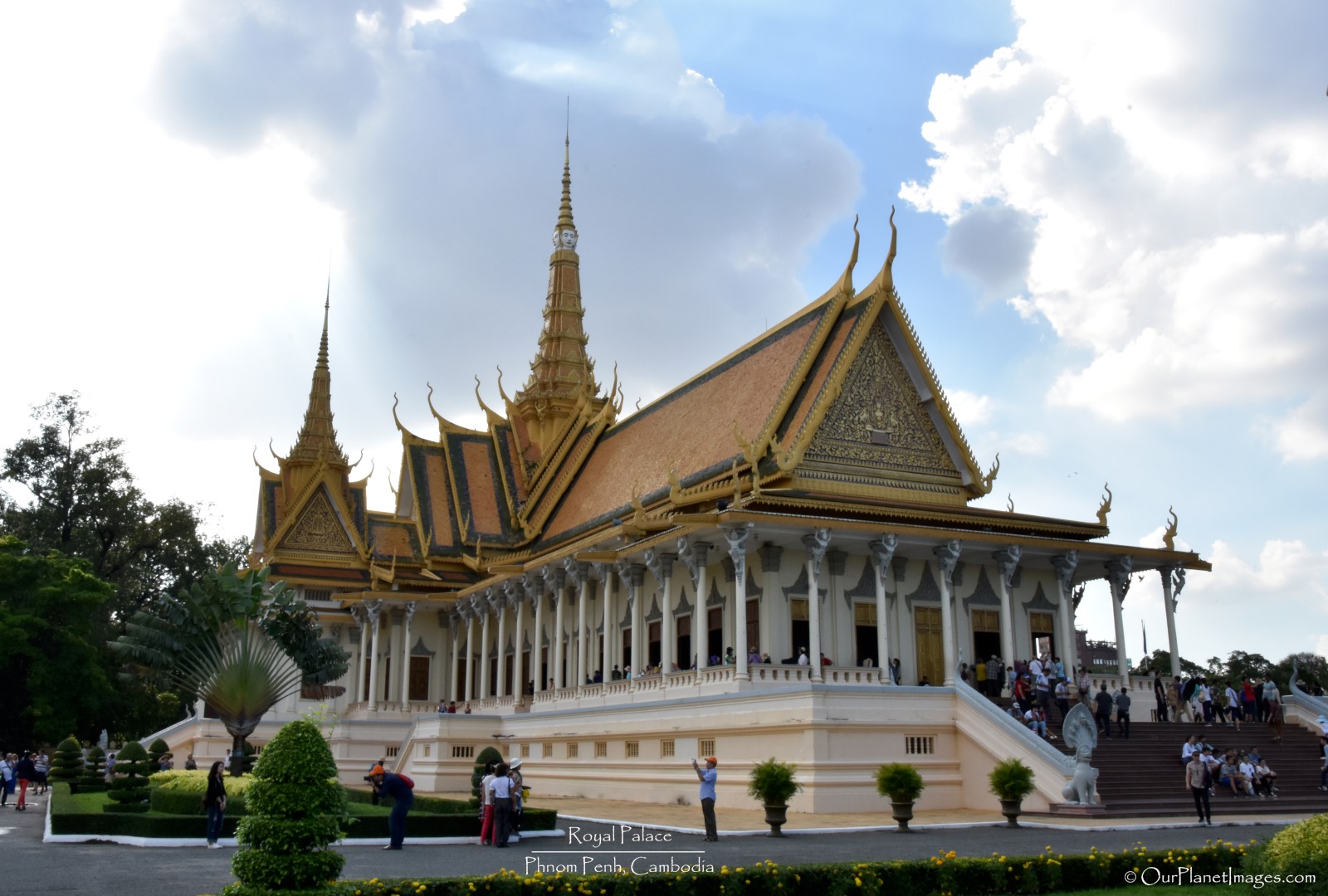
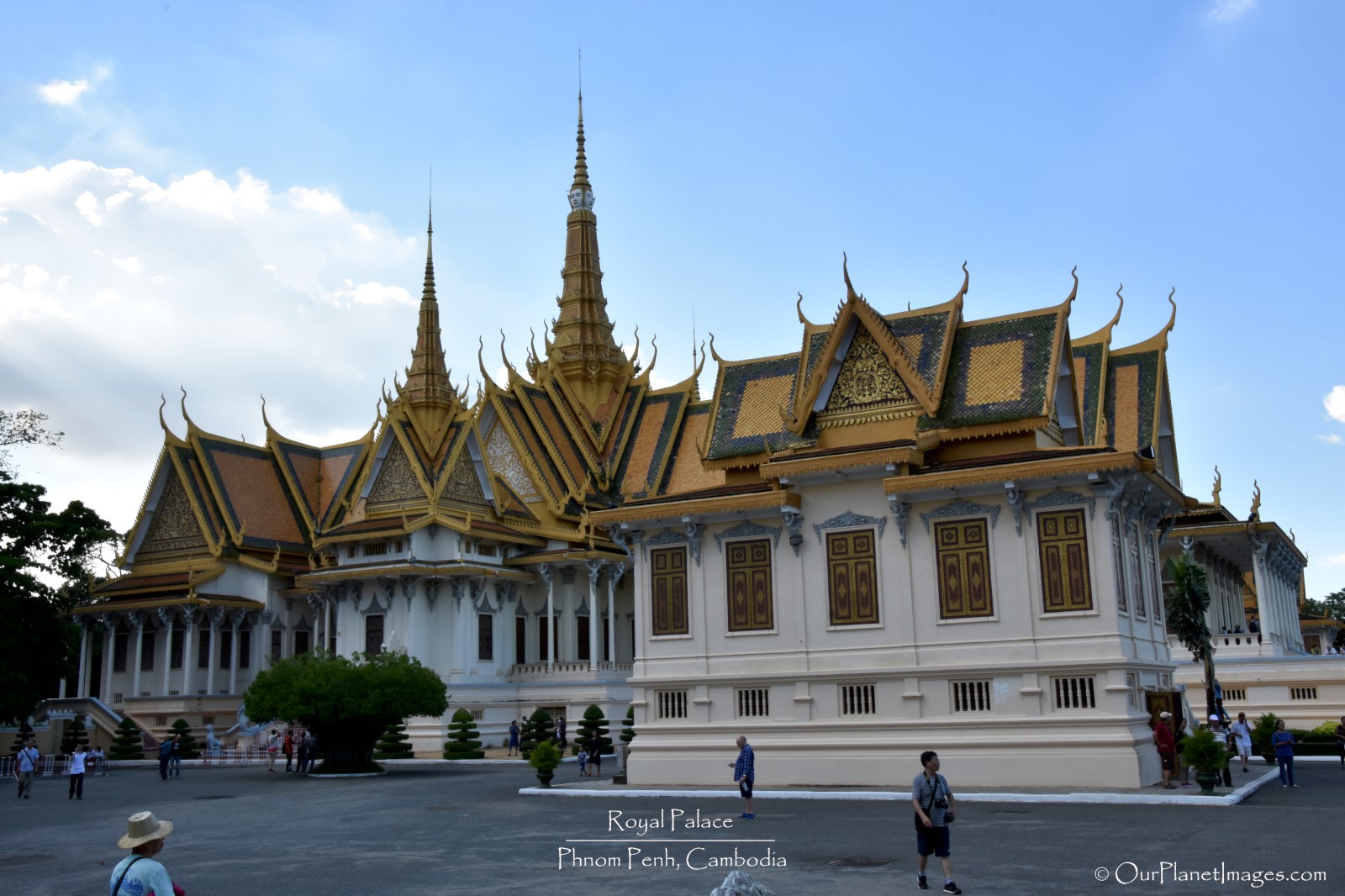
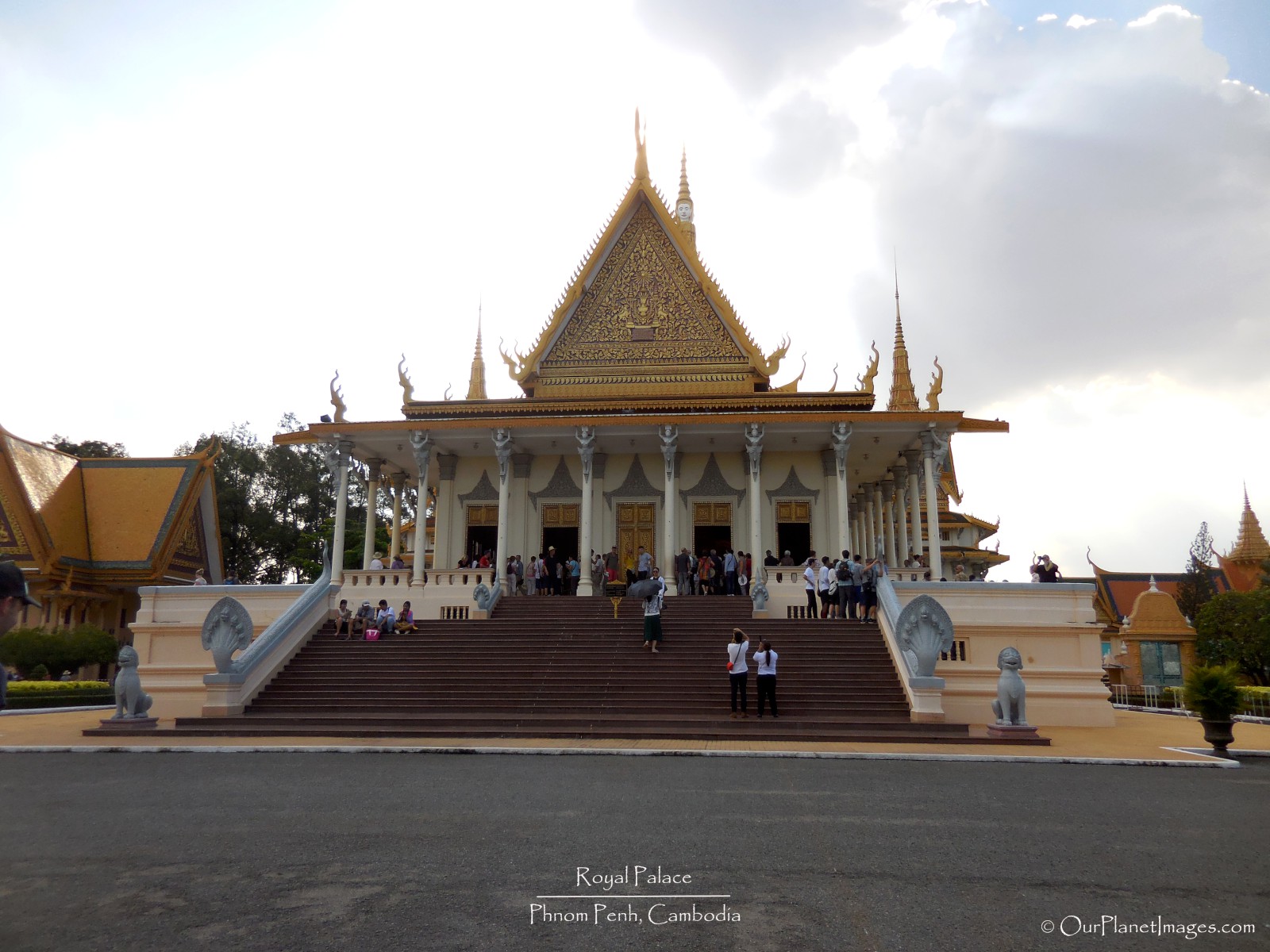
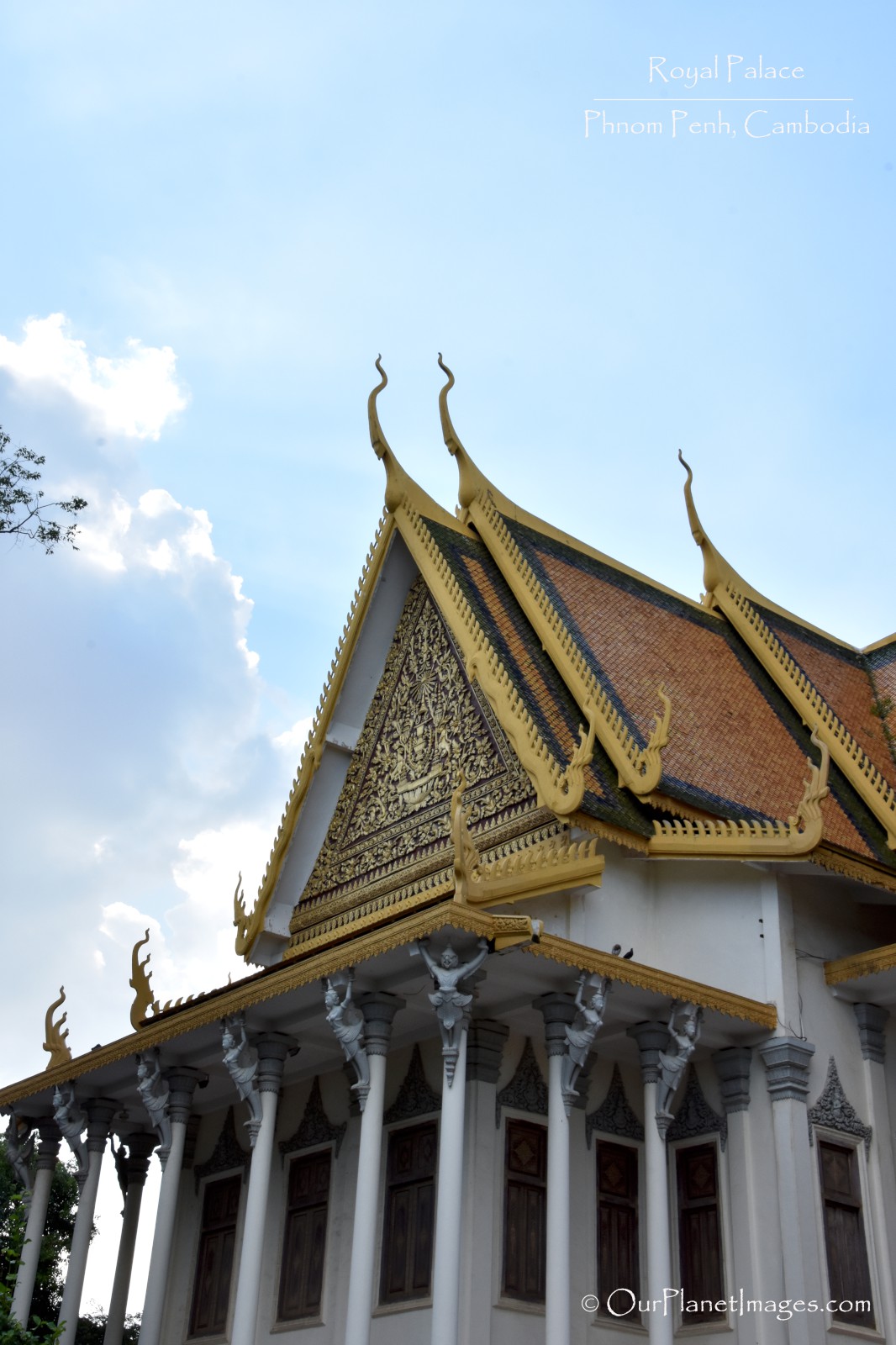
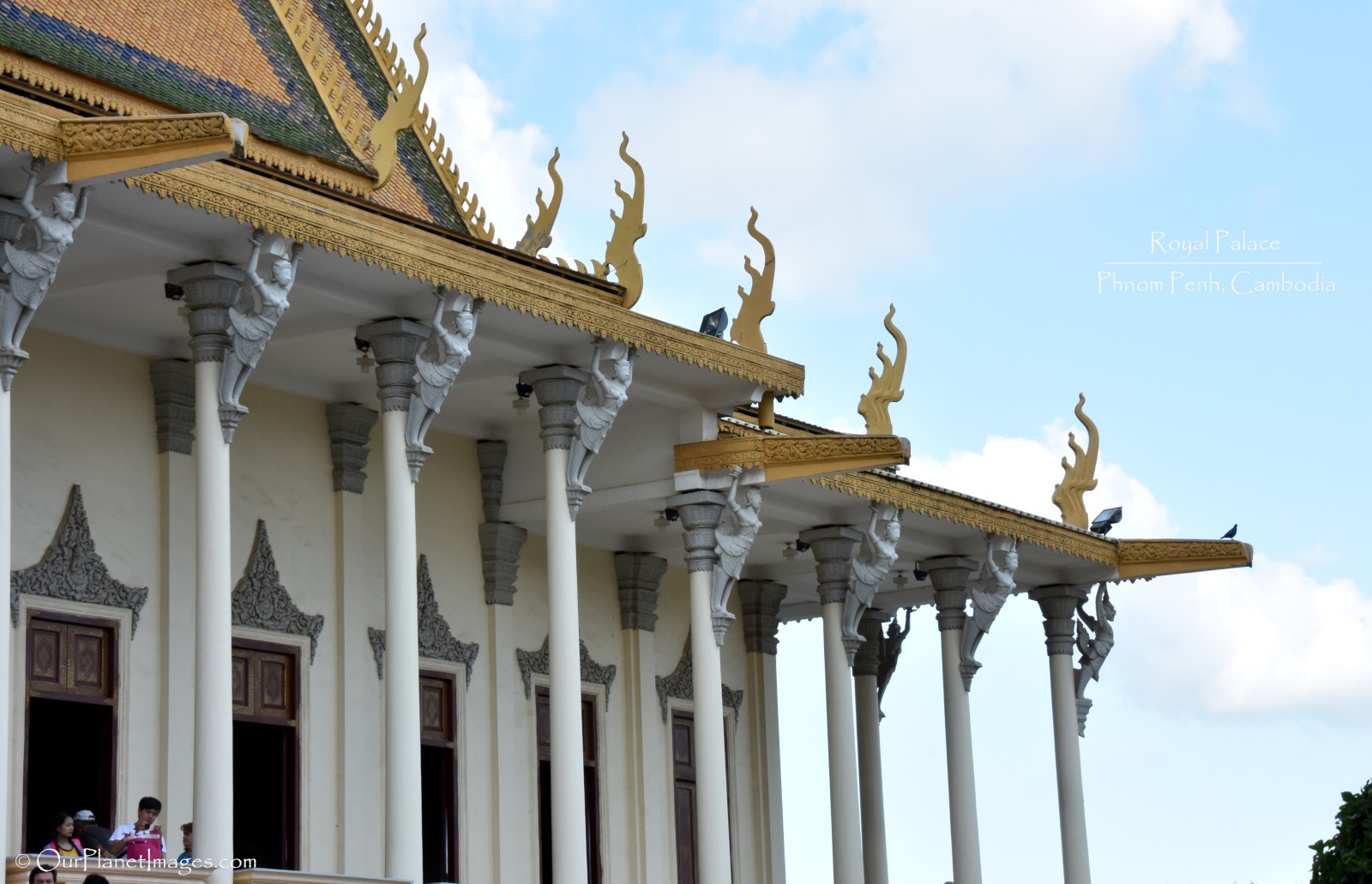
The Throne Hall is topped by a two spires. The tallest is 59 meters tall and was the most interesting for me because of the four faces that looks in four directions.
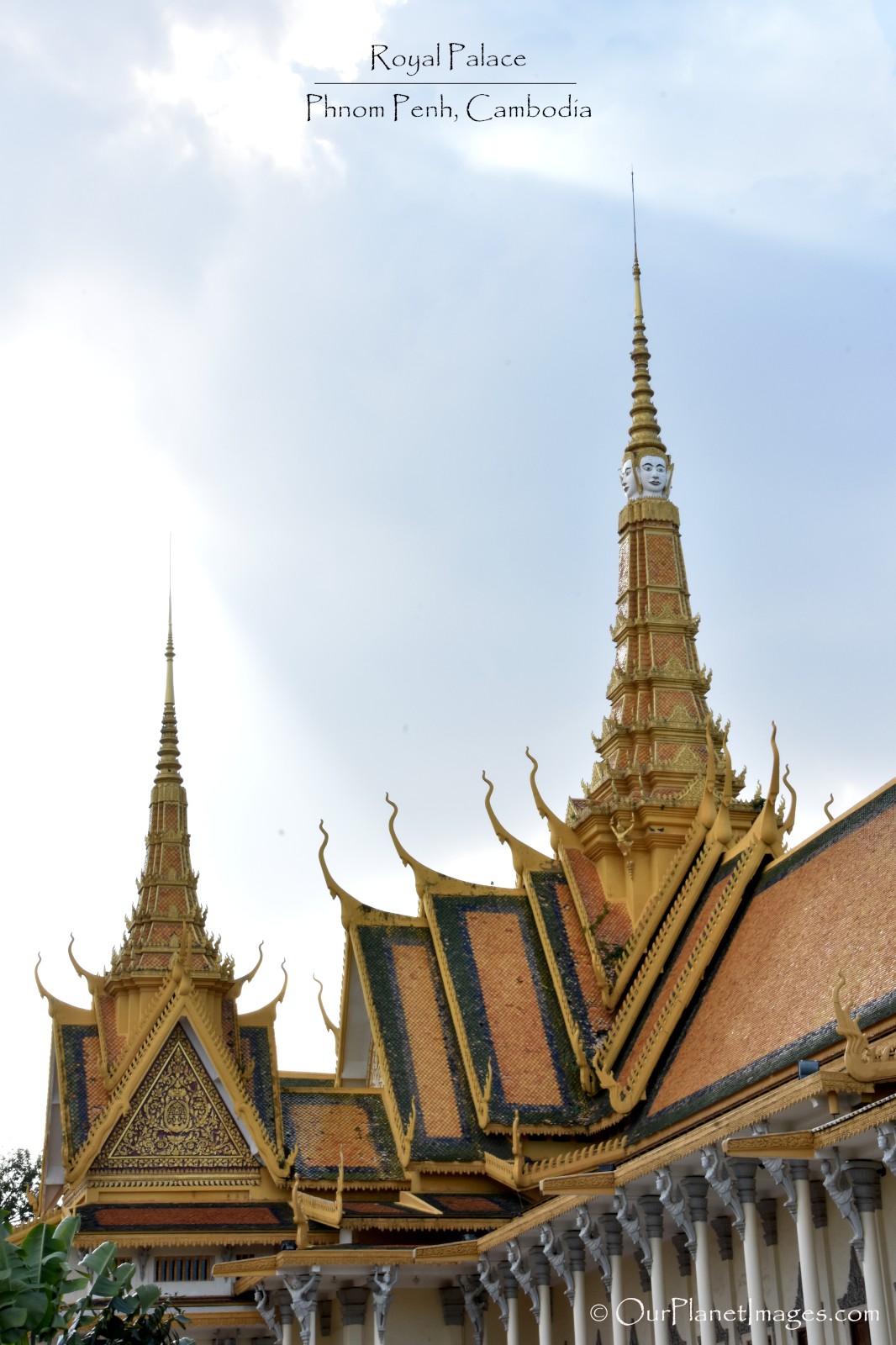
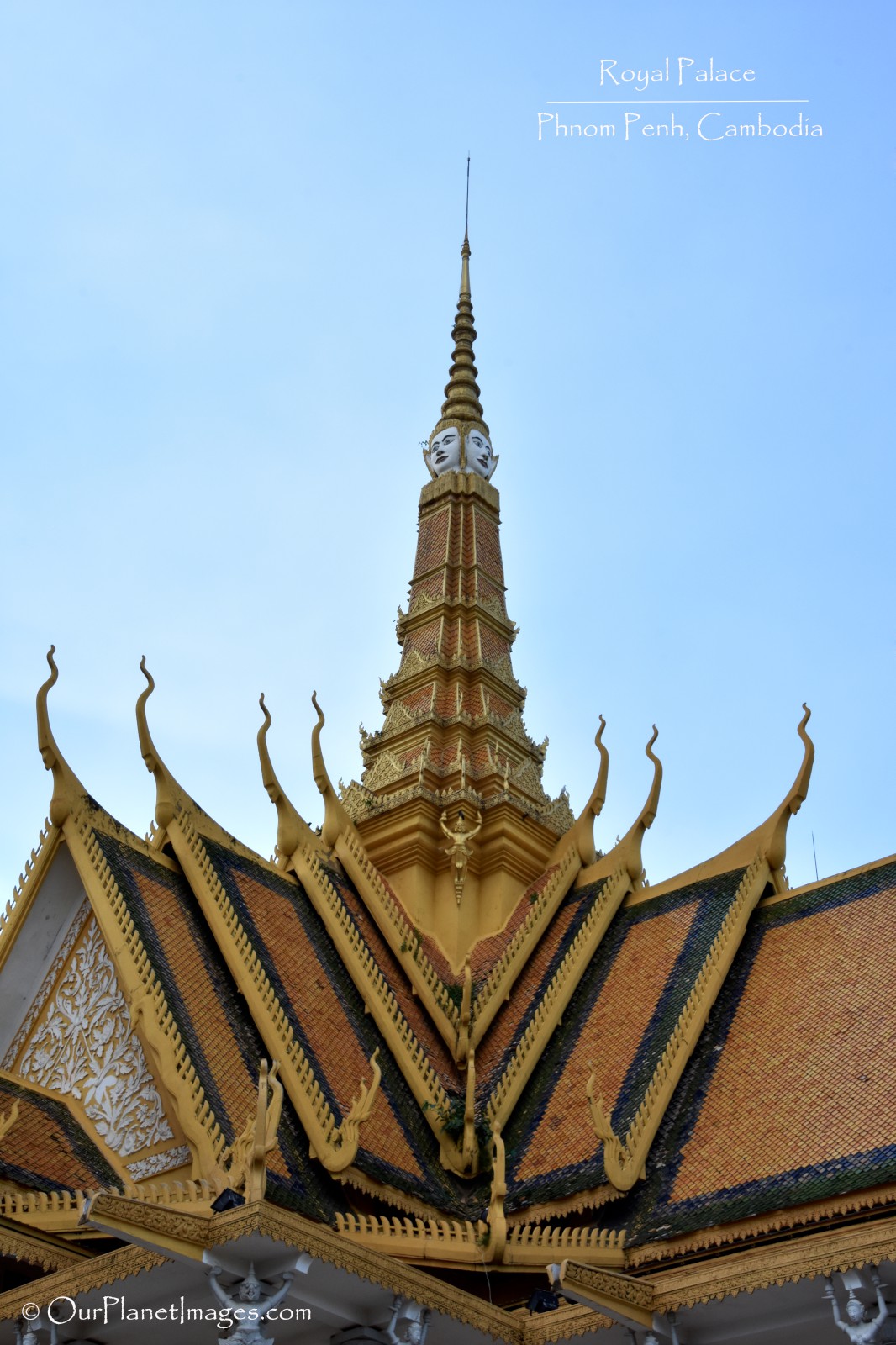
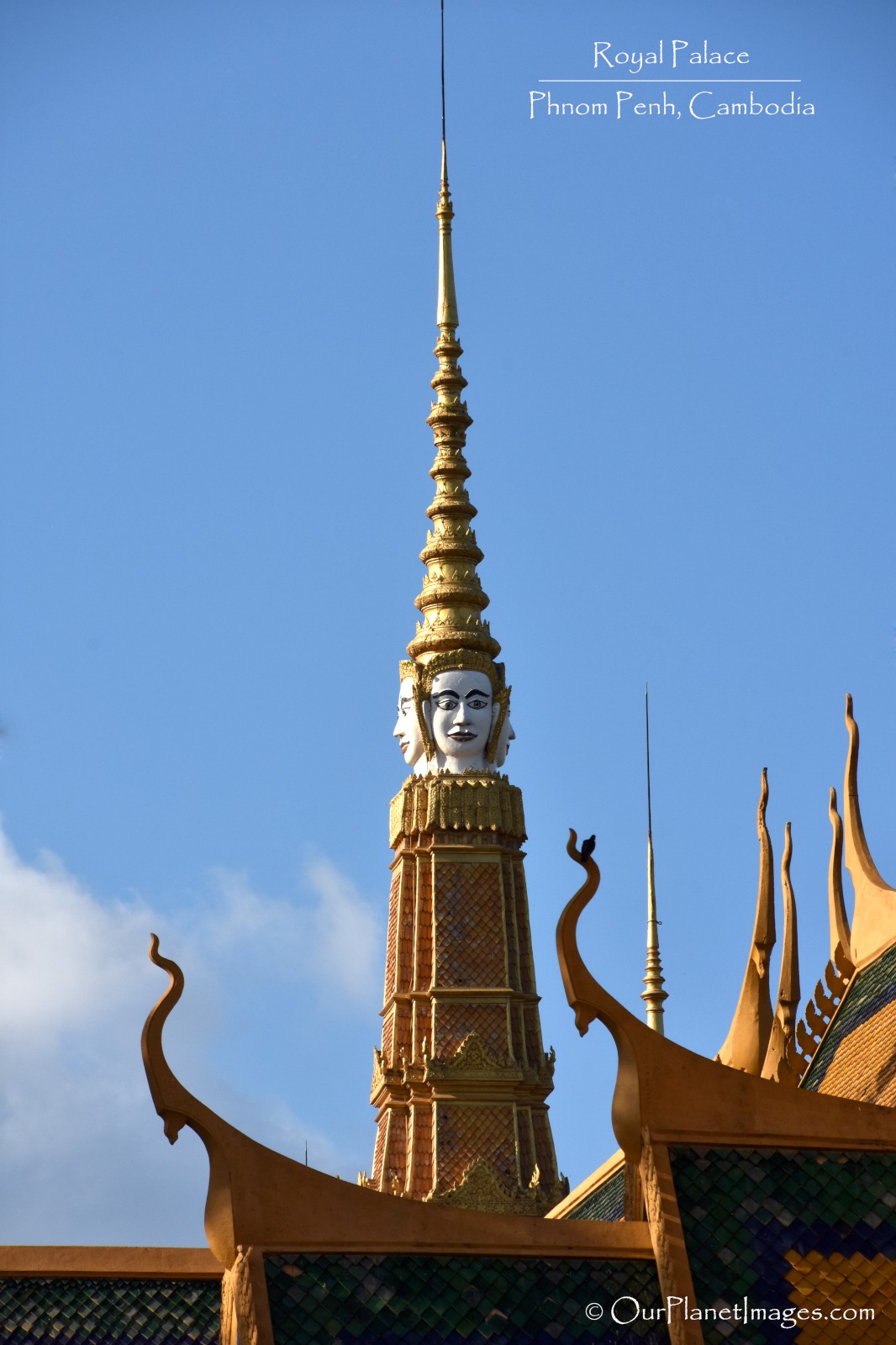
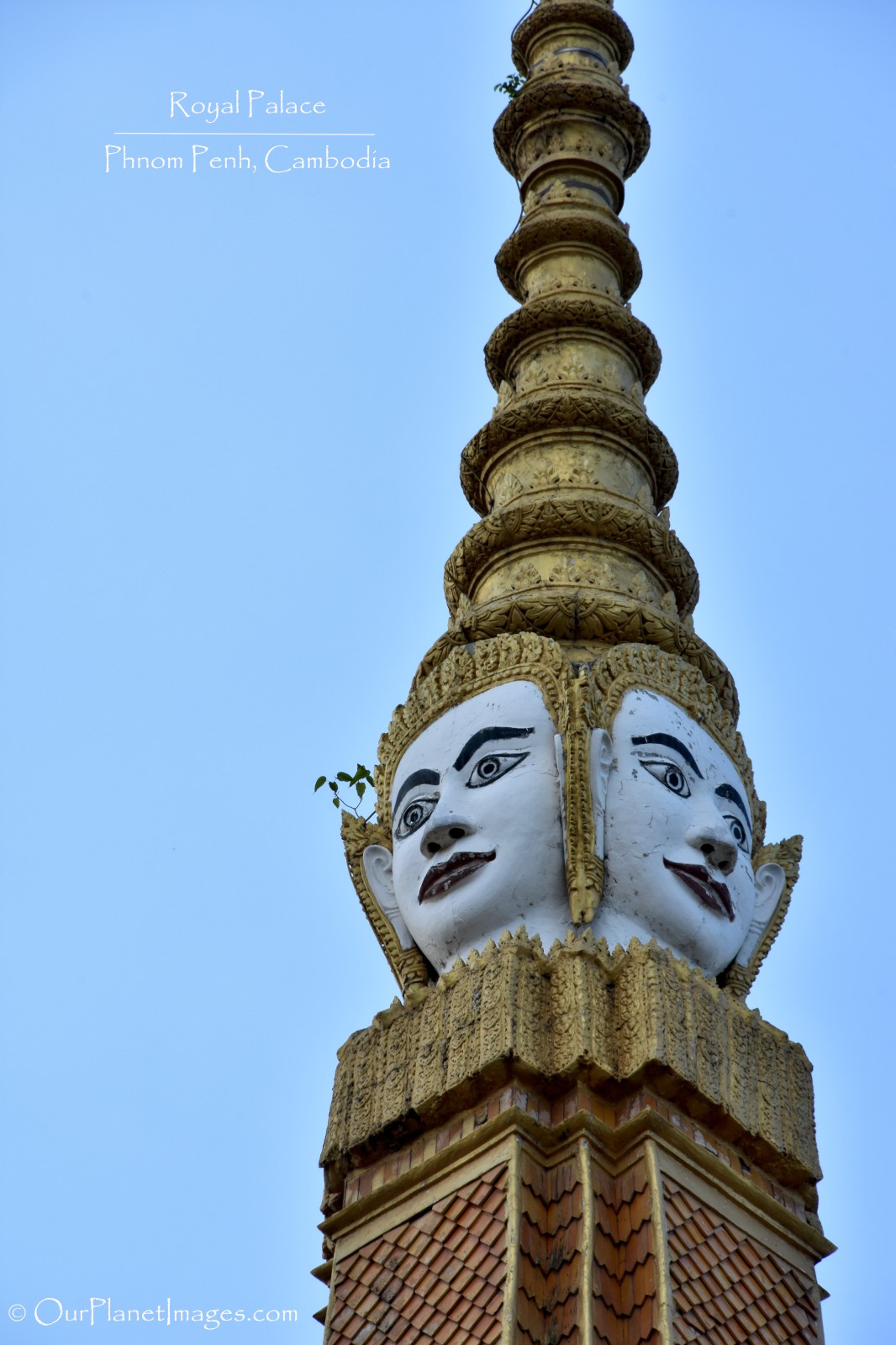
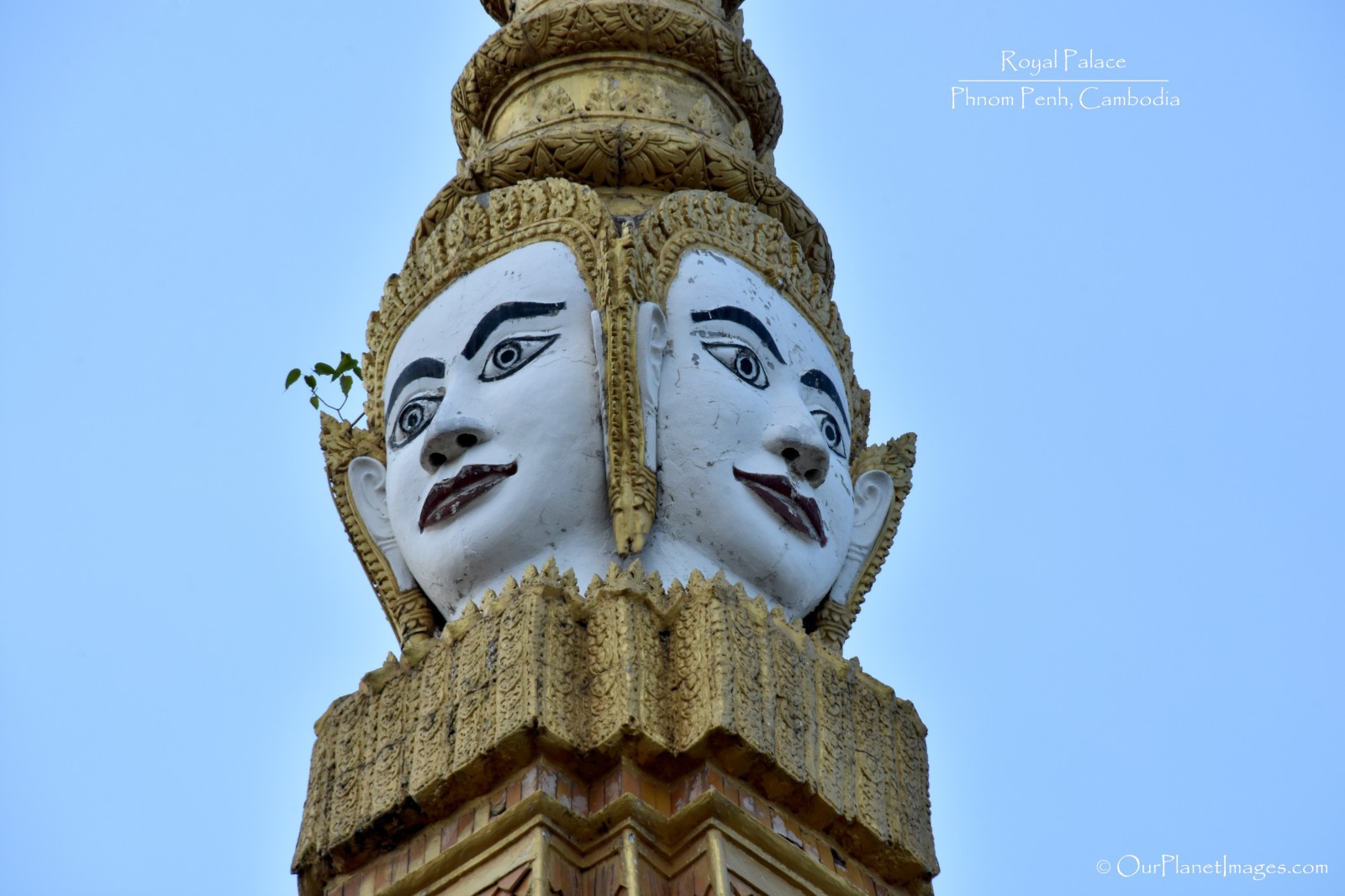
The Chanchhaya Pavilion which is also known as the Moonlight Pavilion serves as the venue for the Royal Dancers, a place for the king to address the crowds and for state and Royal banquets.
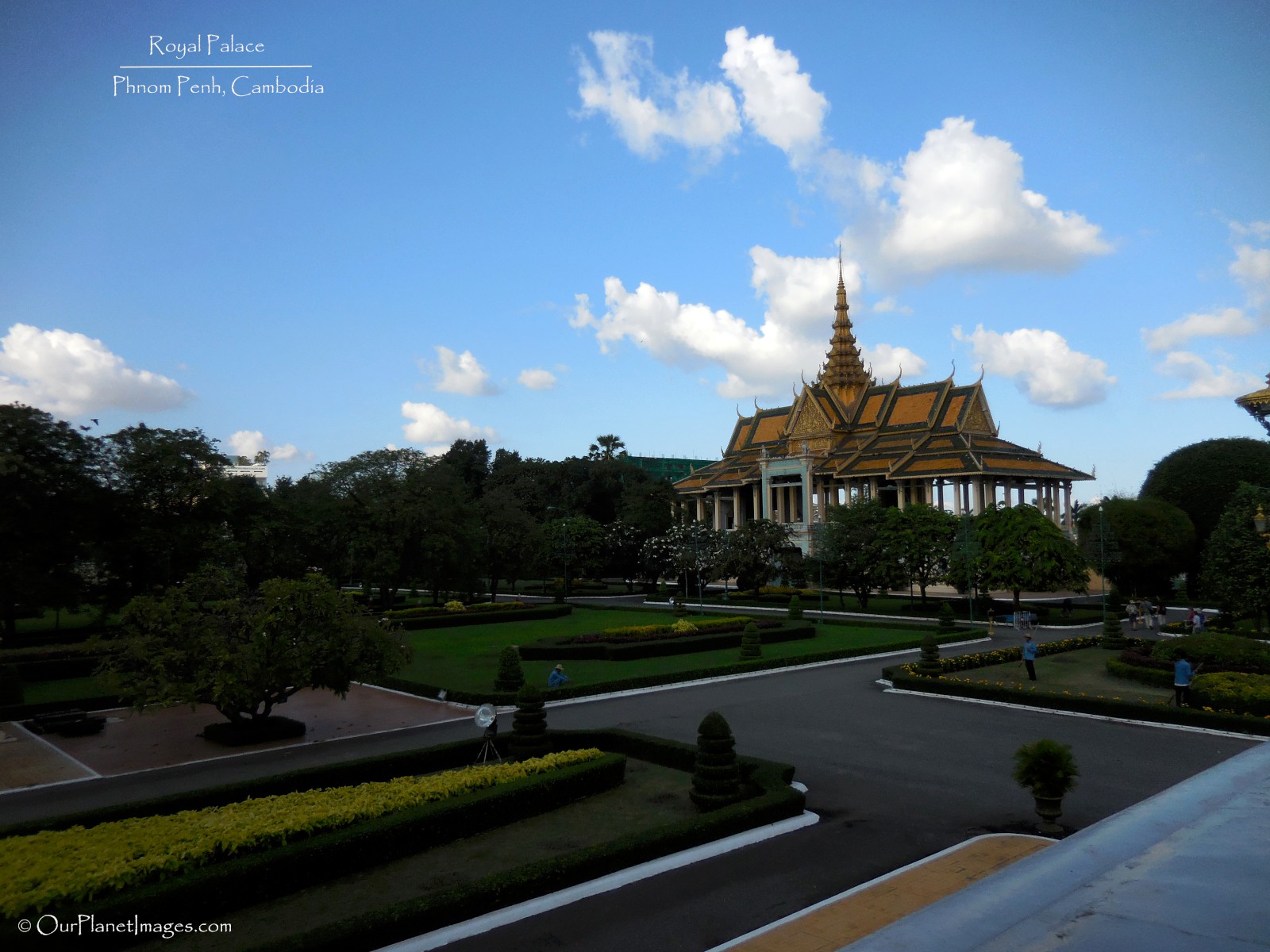
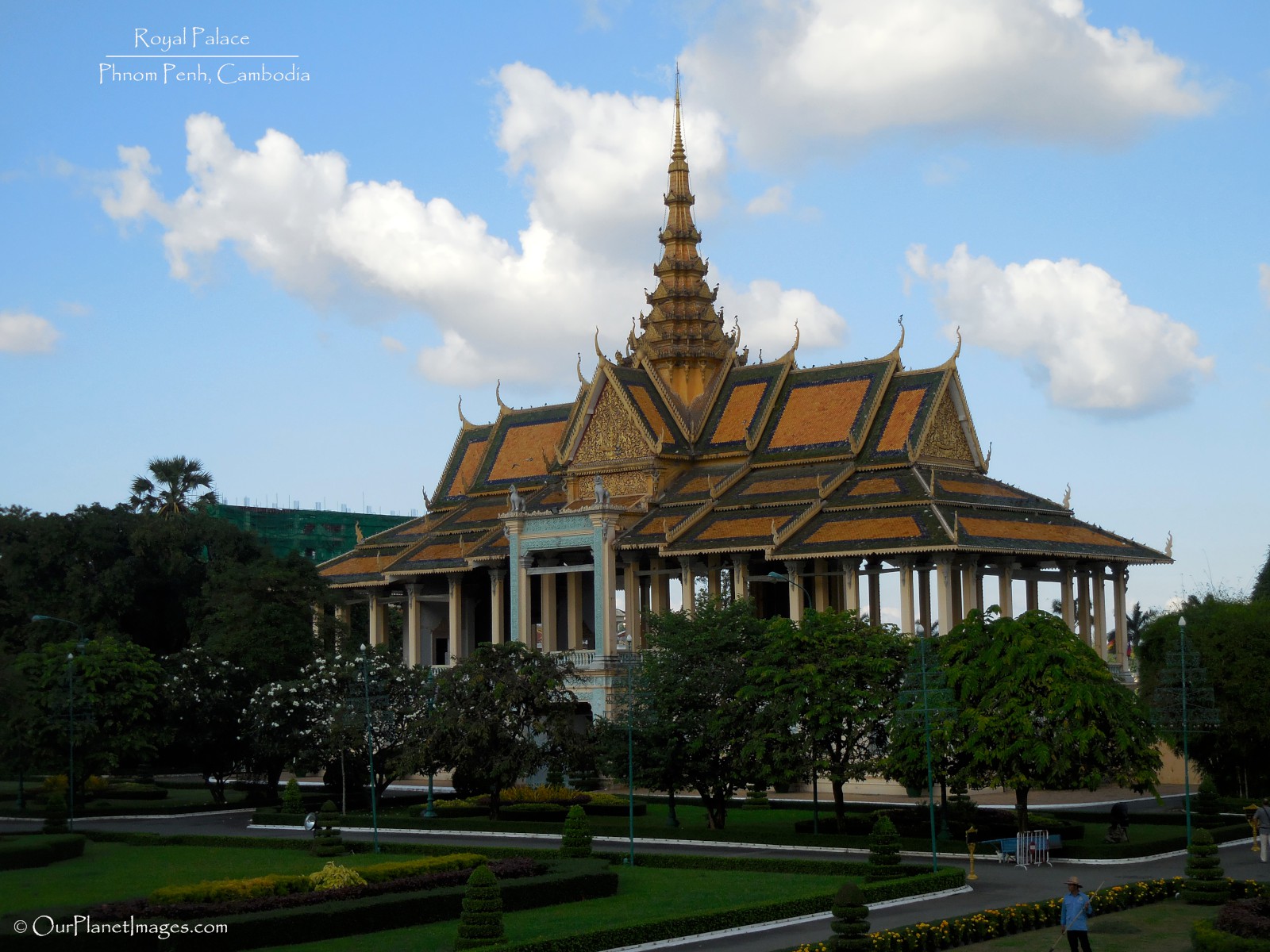
Hor Samran Phirun is known as the Royal rest house where the king would wait to mount an elephant for Royal processions. Currently it housed a display of gifts from foreign heads of state.
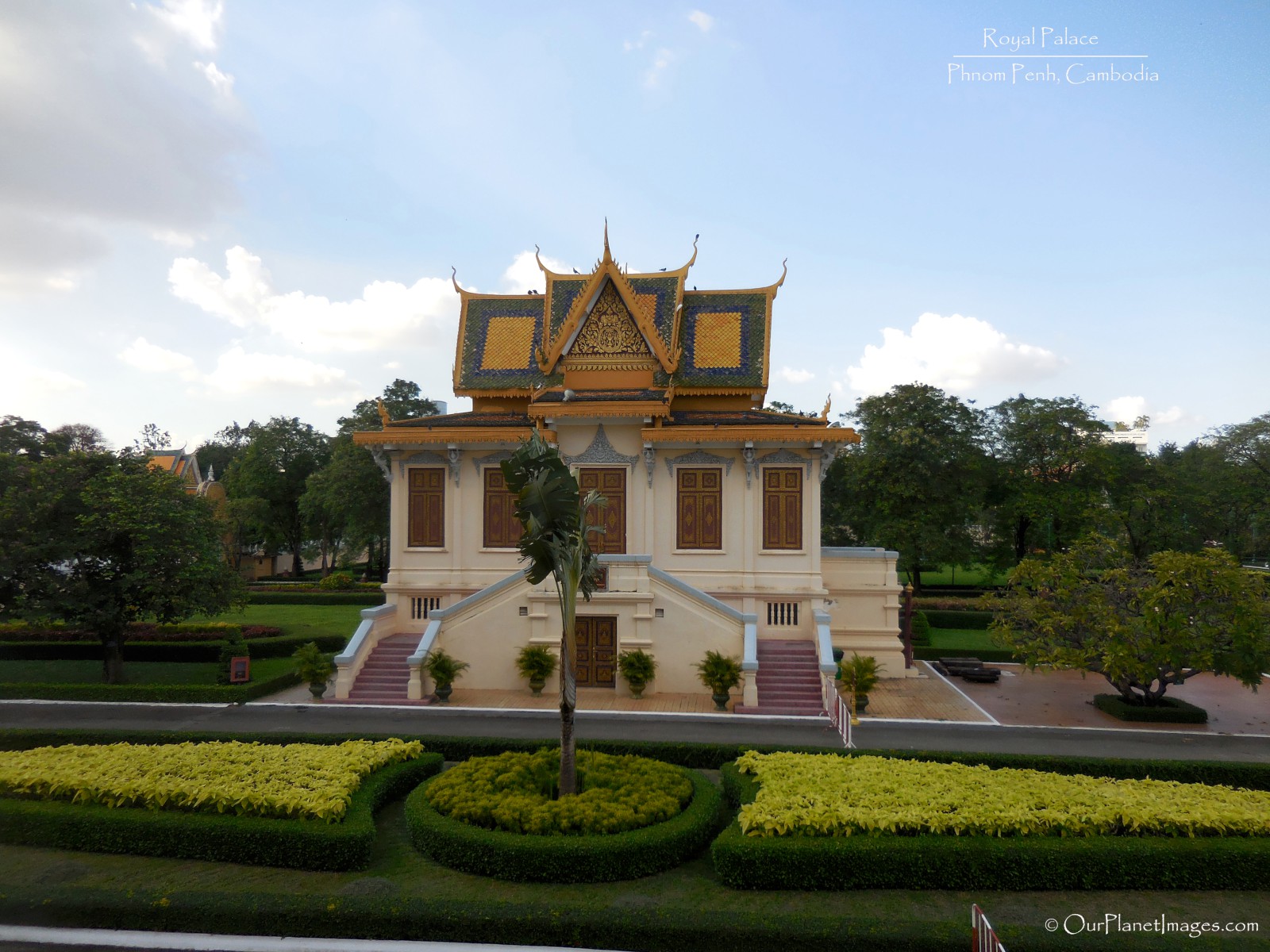
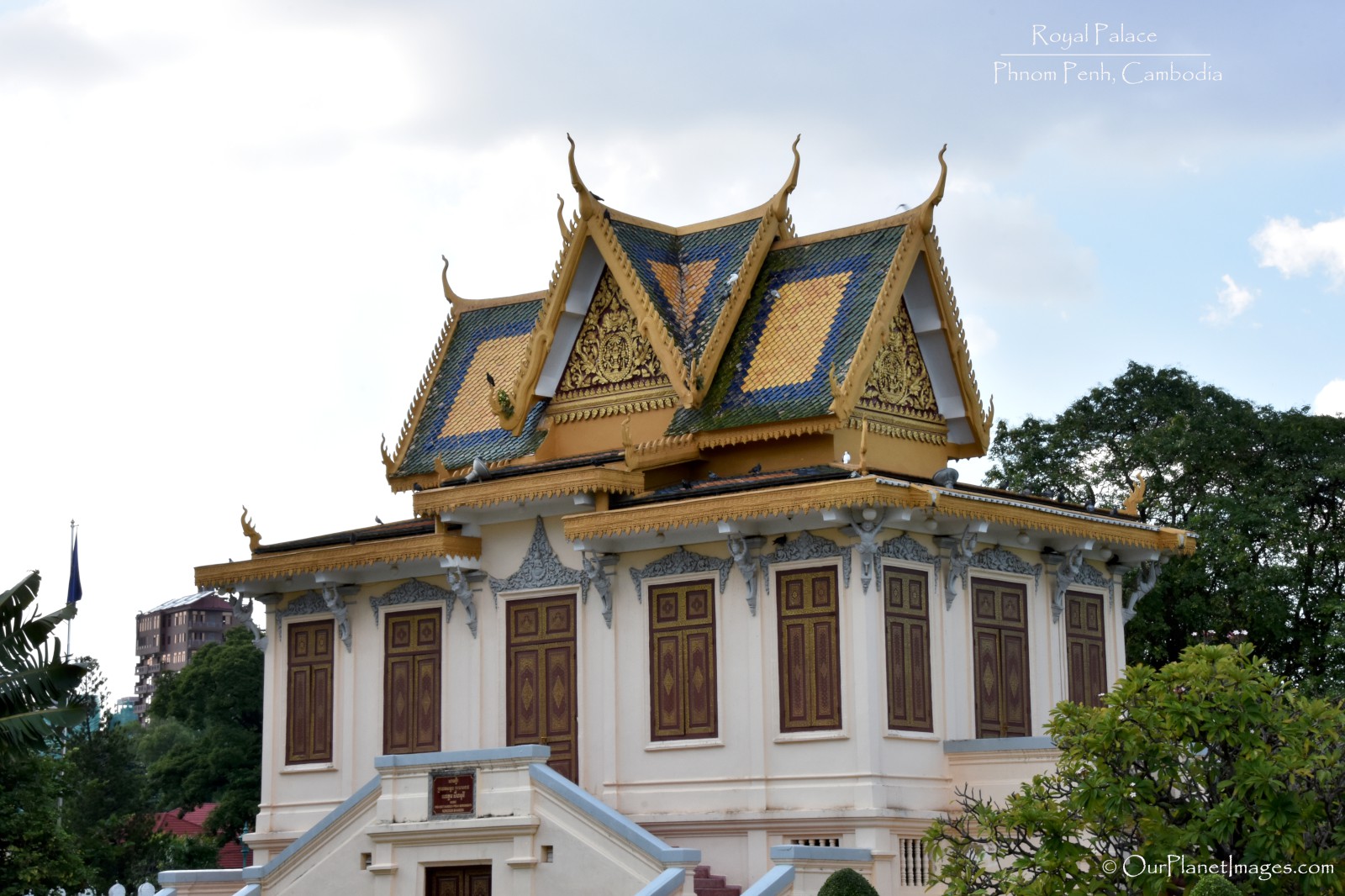
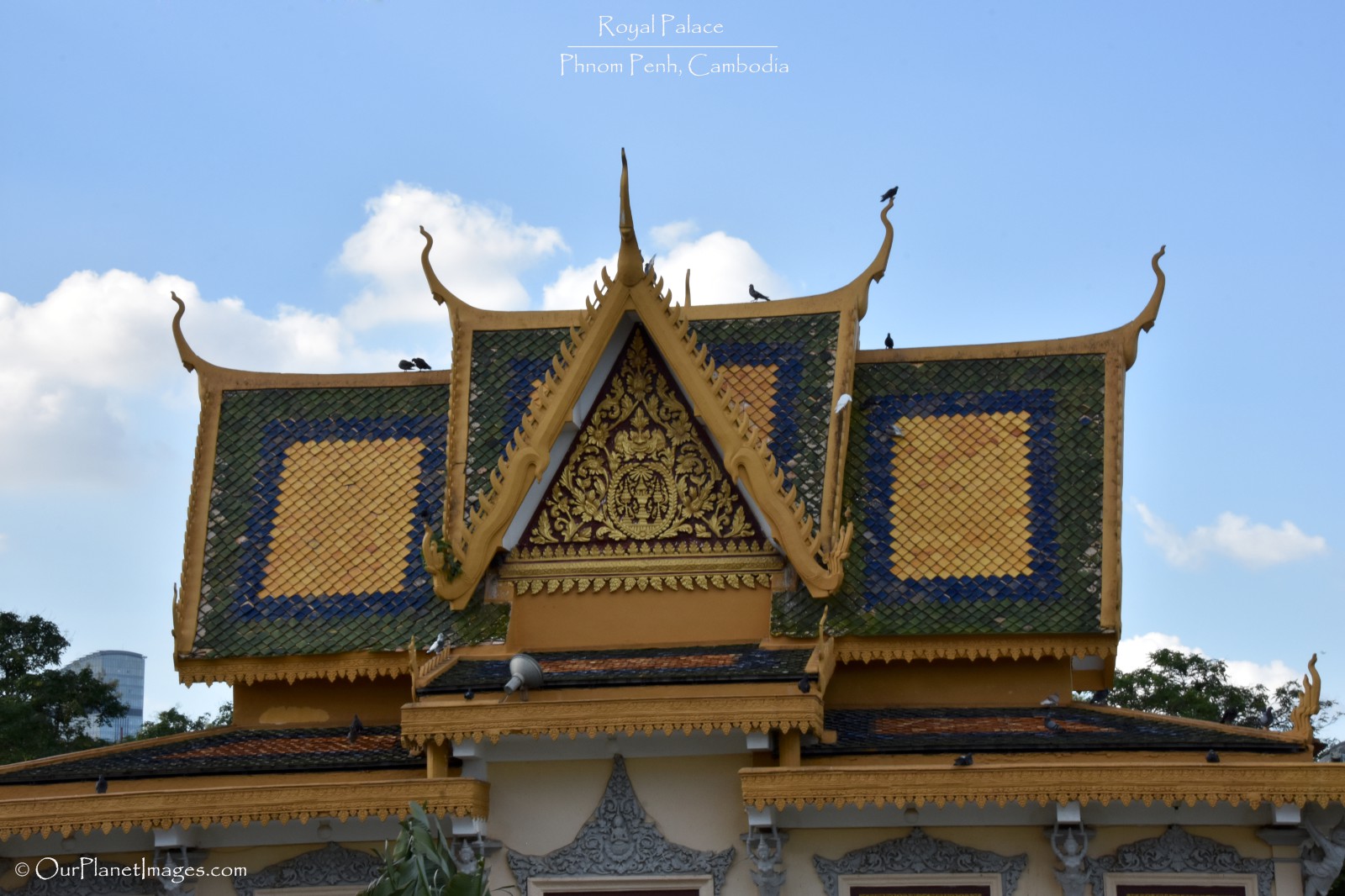

The Phochani Pavilion is an open hall originally constructed as a classical dance theater in 1912 but is currently used for Royal receptions and meetings.
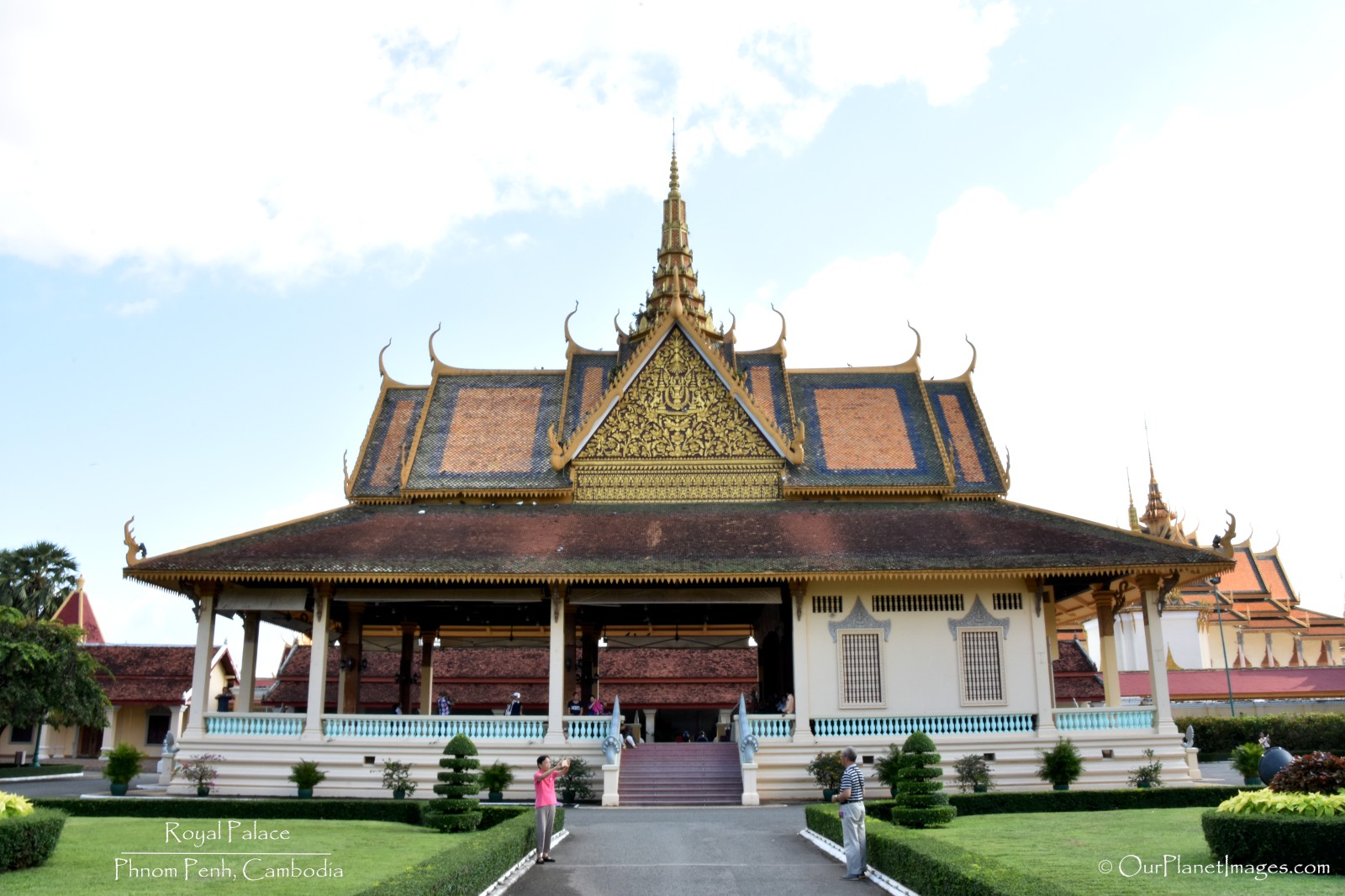
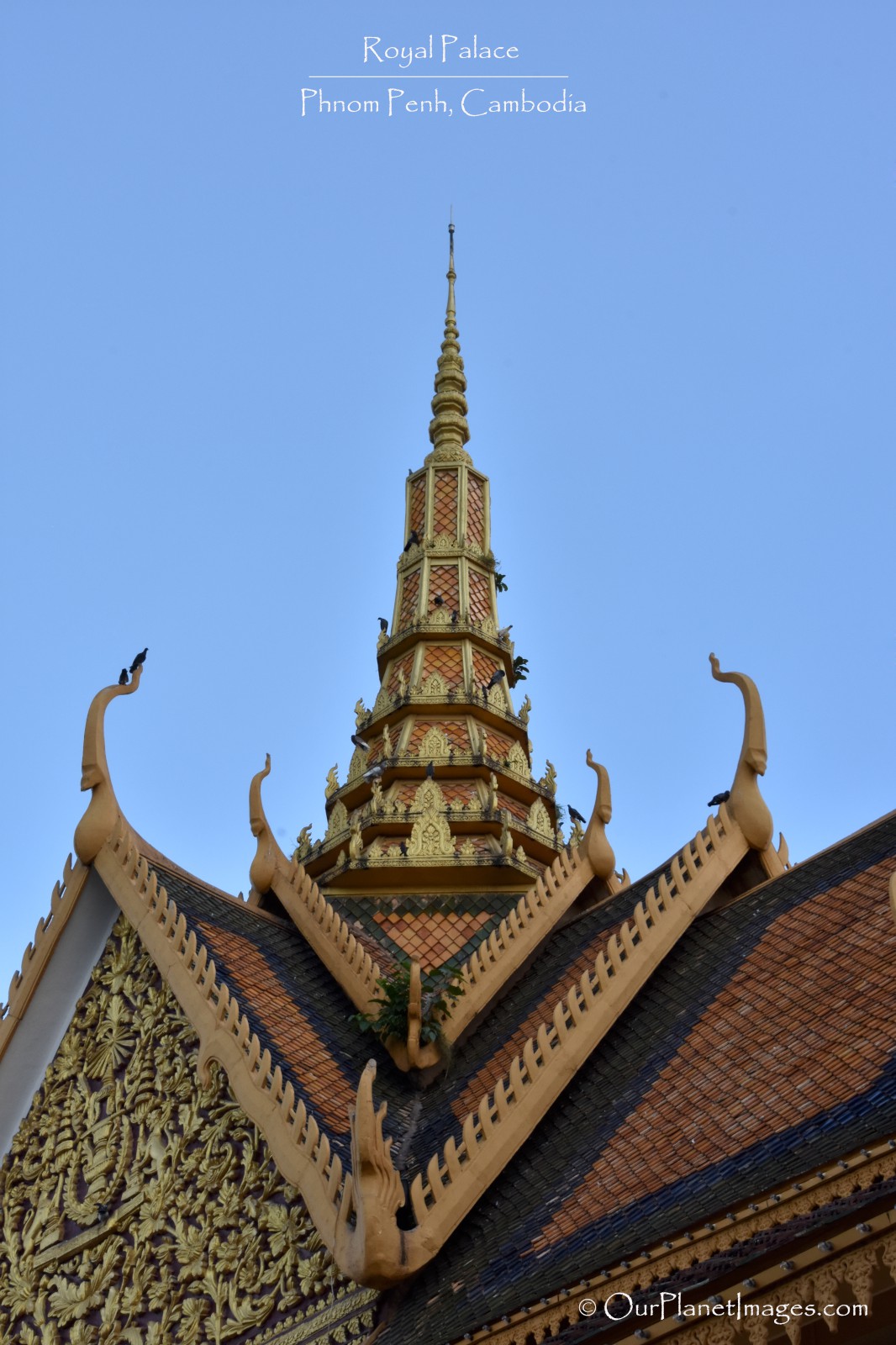
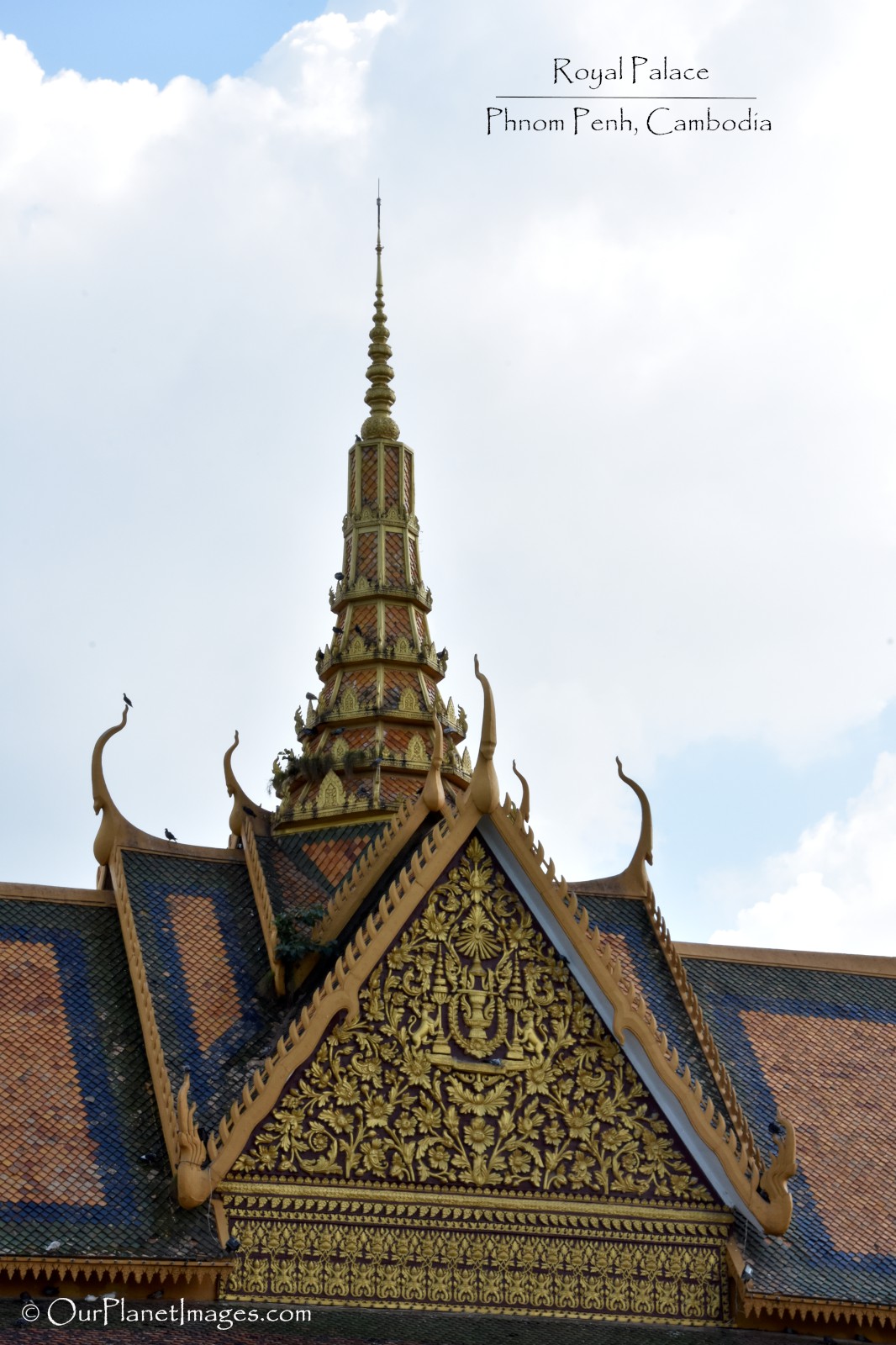
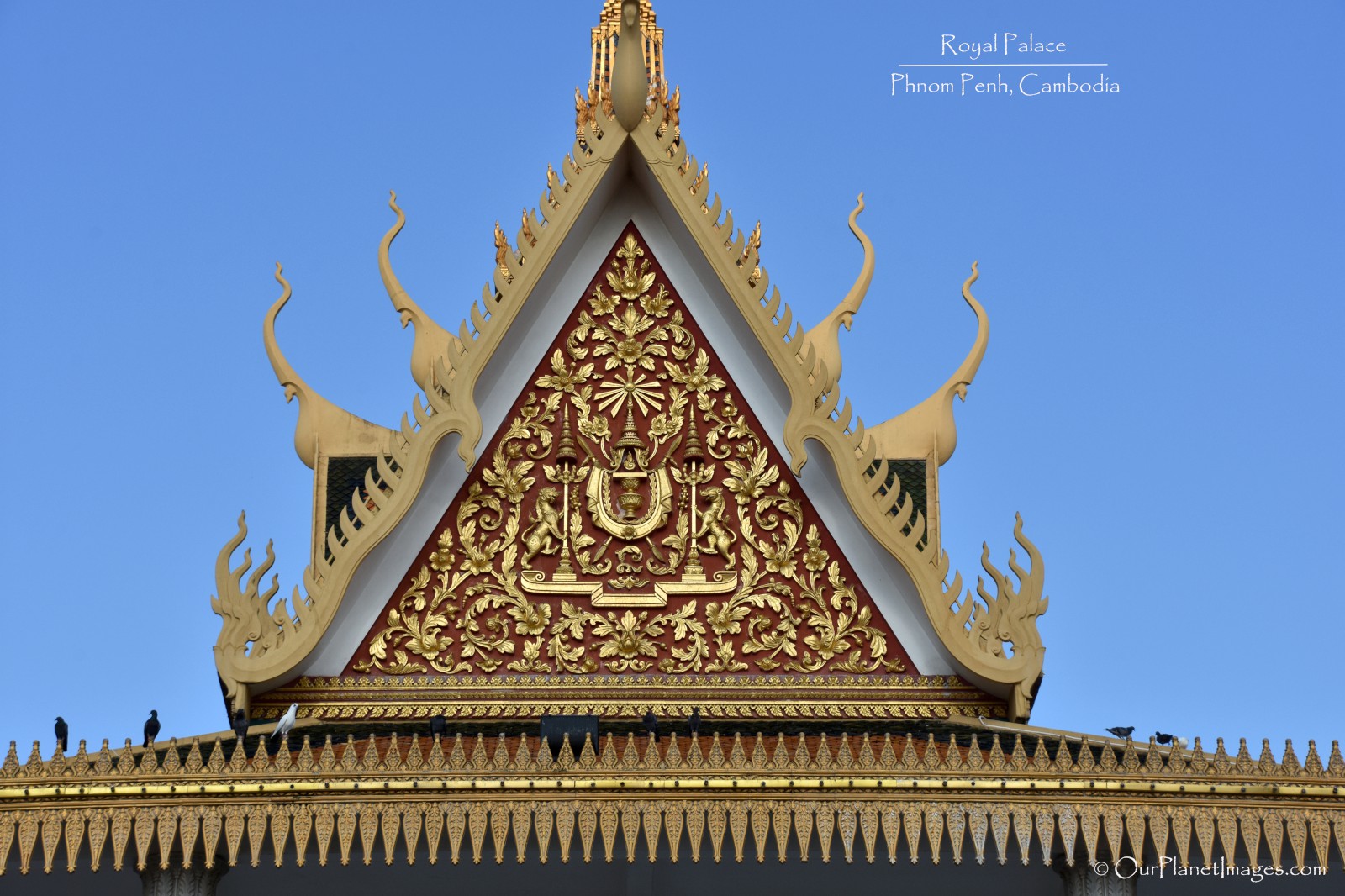
The Damnak Chan building was originally built for the High Council of the Throne, it was once used as the Supreme National Council of Cambodia but is currently the administrative offices of the Royal Palace.
The building itself is different than the other buildings in a couple of ways. The building has a Khmer-style roof like all of the other buildings in the Royal Palace but the main body of the building is a western style. The other difference is that this building is the only building that has gold colored statues at the top of the support columns. The statues on the other buildings are gray colored.
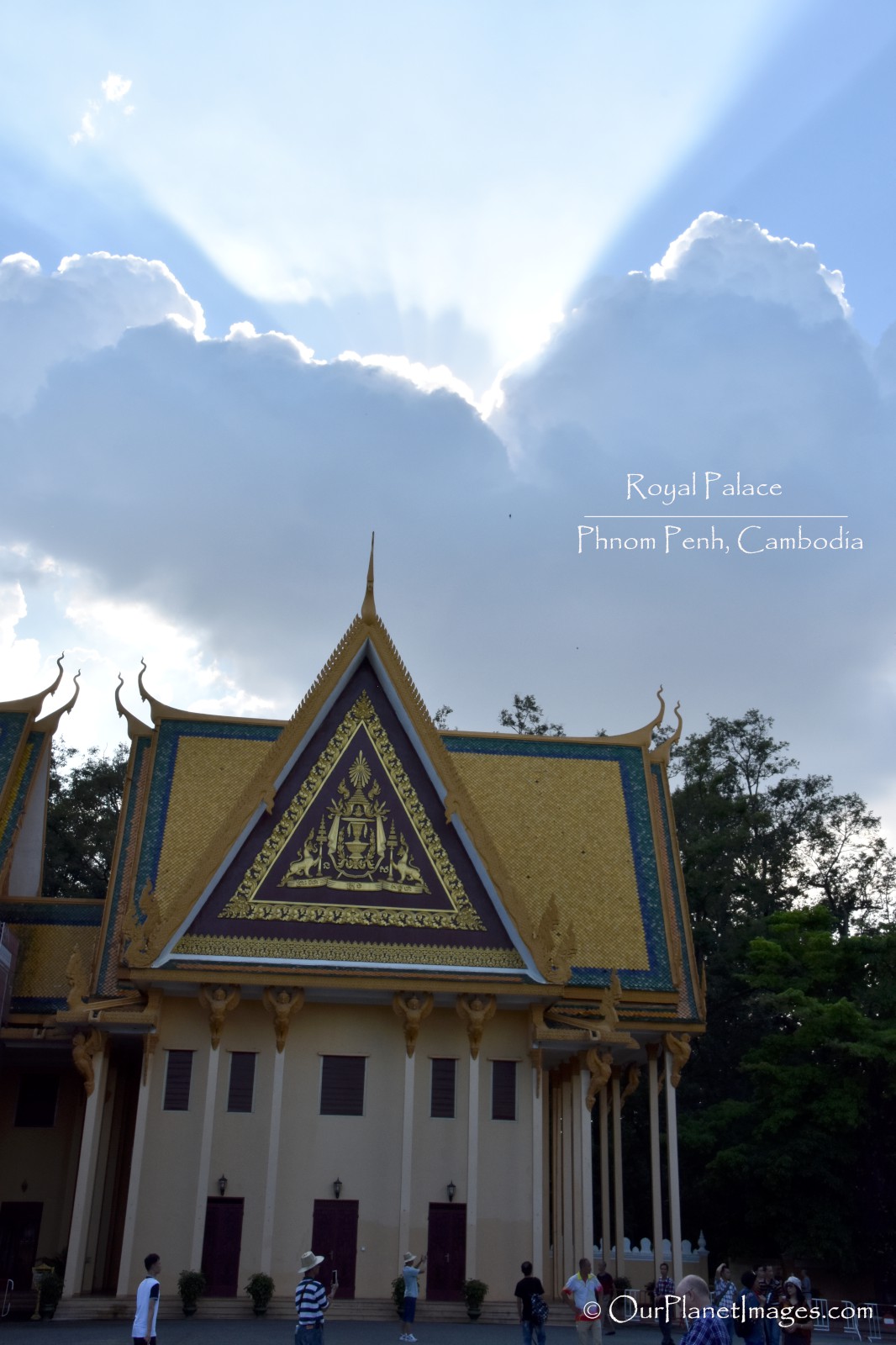
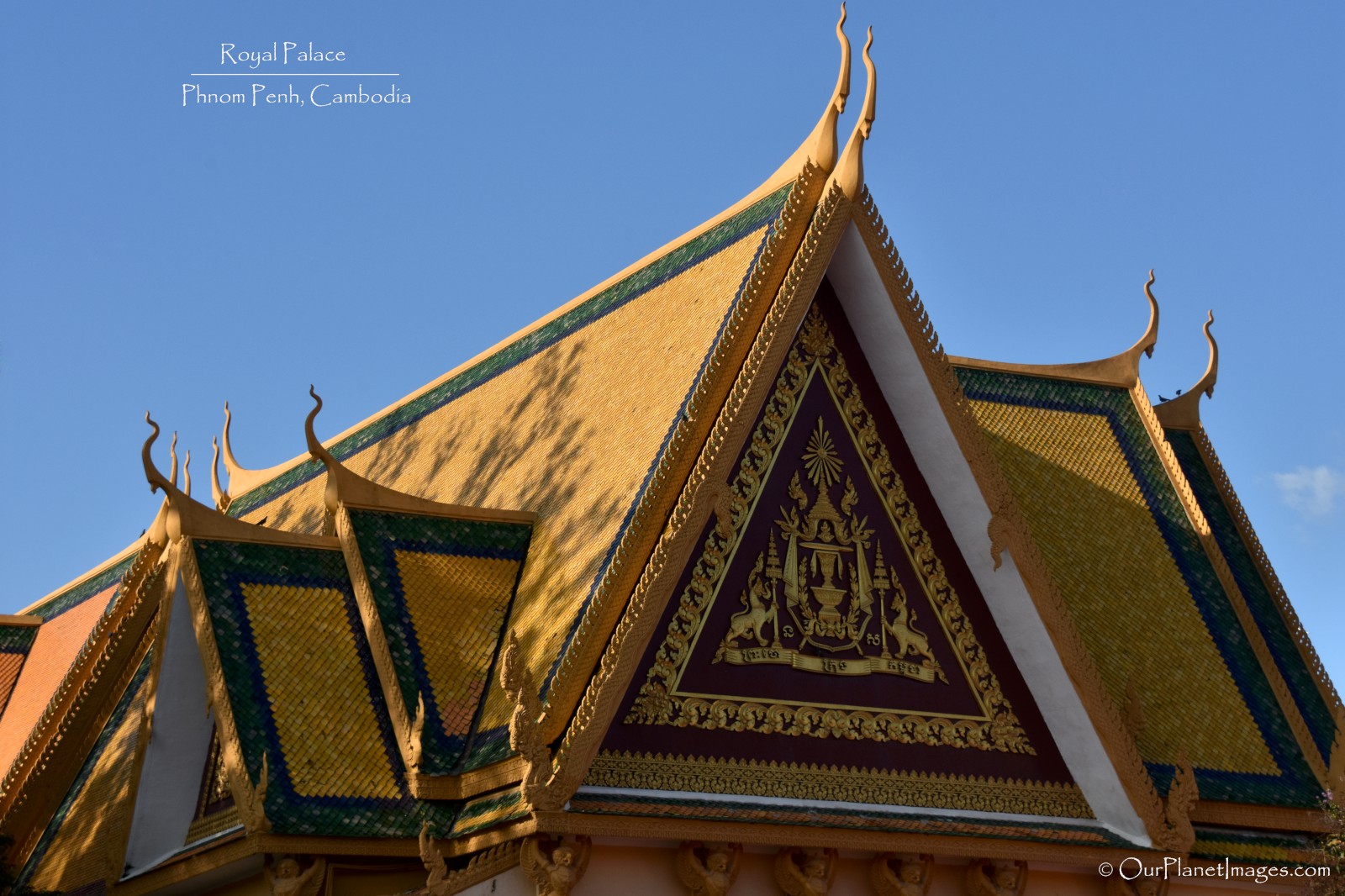
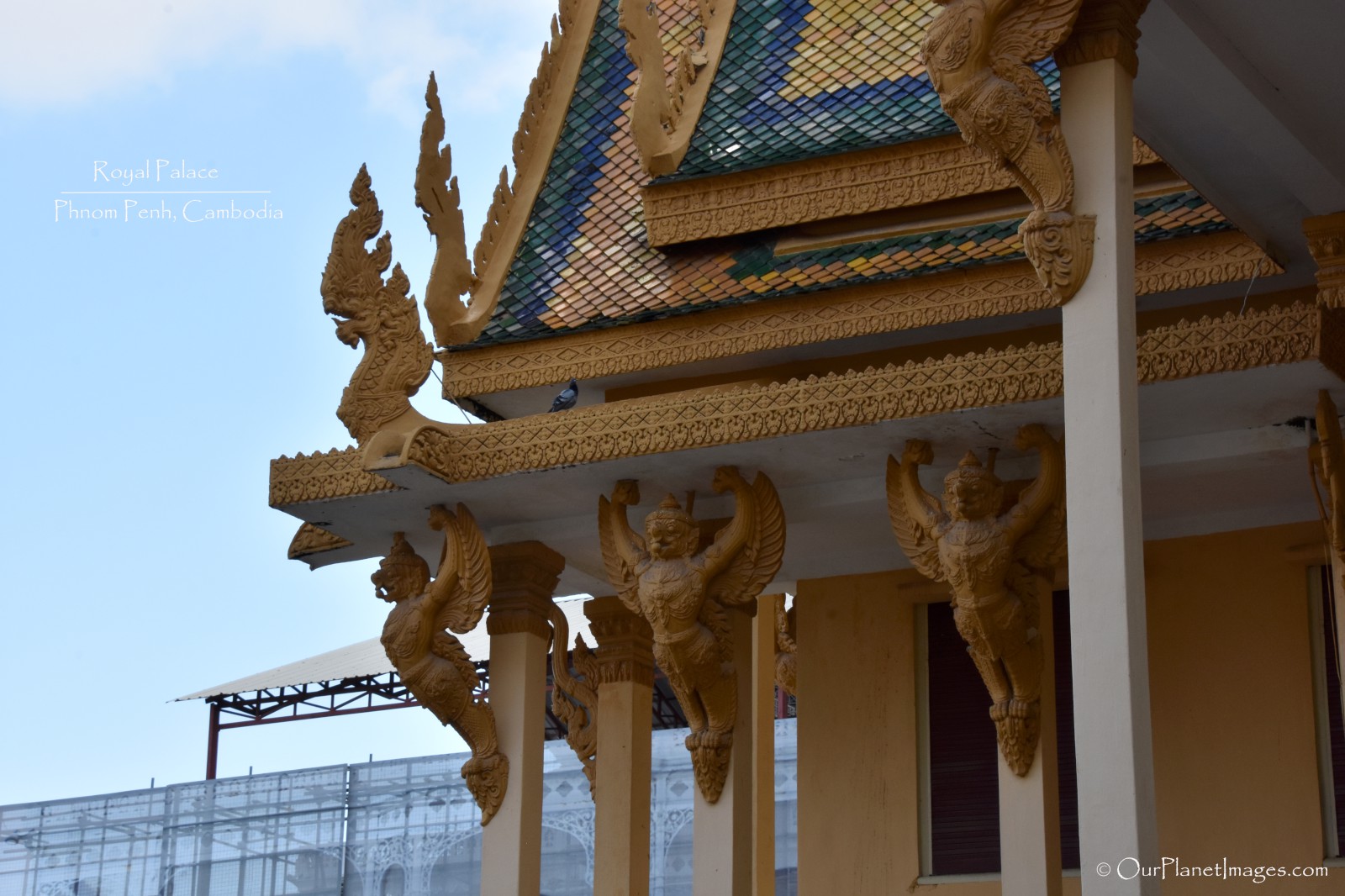
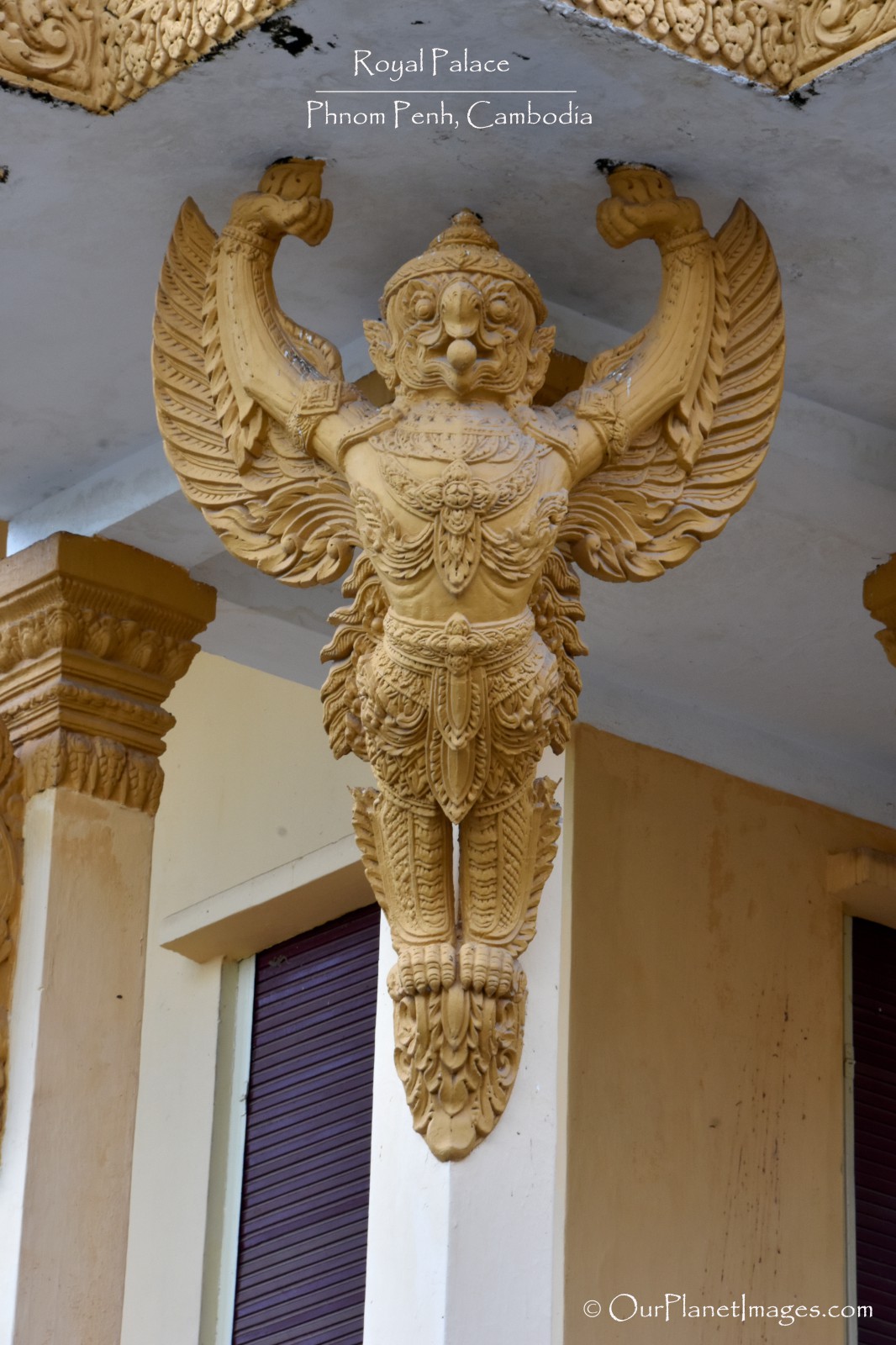
The Khemarin Palace is the Royal residence and is closed to the public so the only photo that I have of this building is shown below.
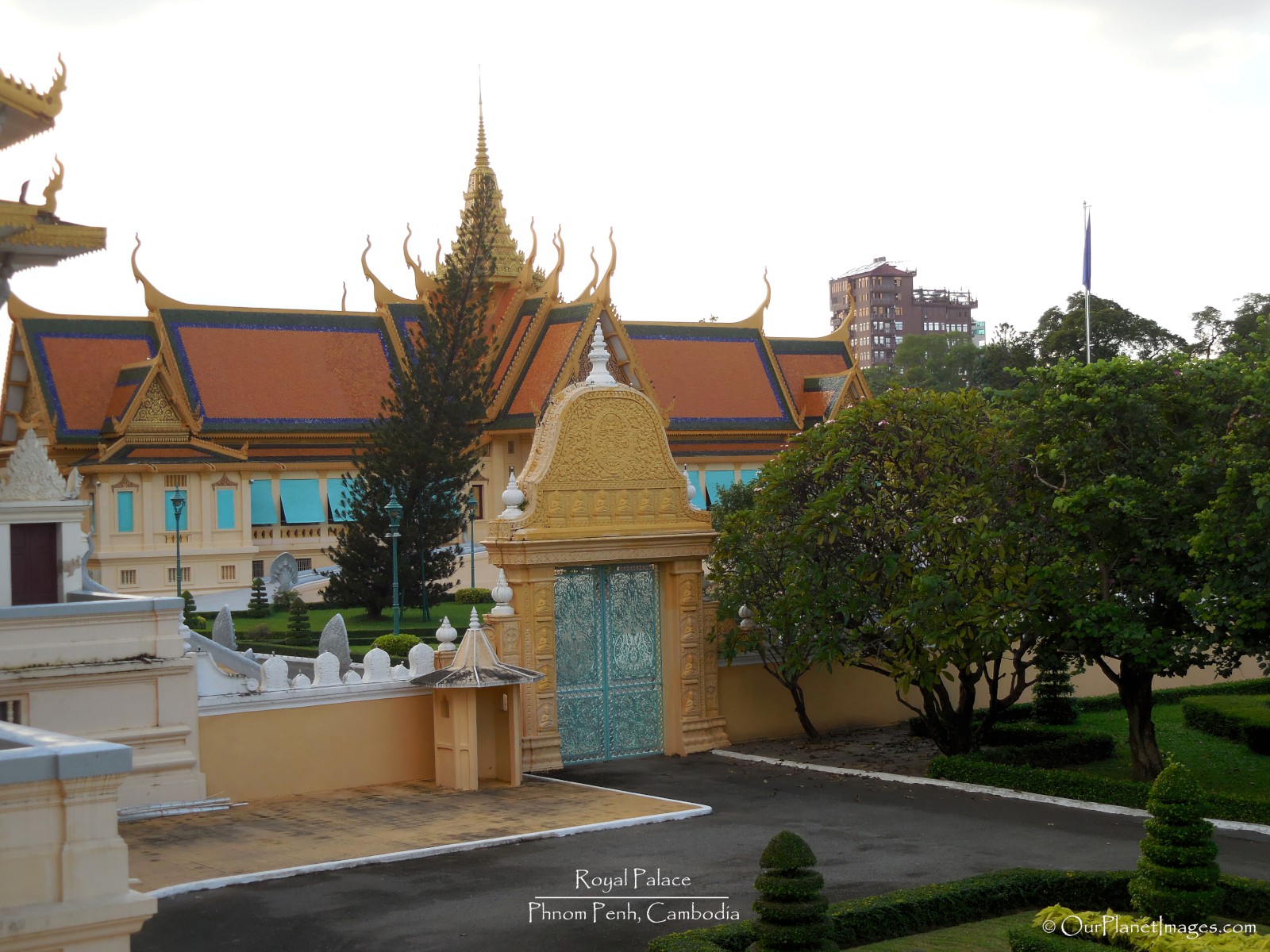
All of the buildings are impressive but the manicured gardens within the compound are beautiful and there are other details within the compound that add to the overall appearance of the palace. Some of these details are shown in the following photos.
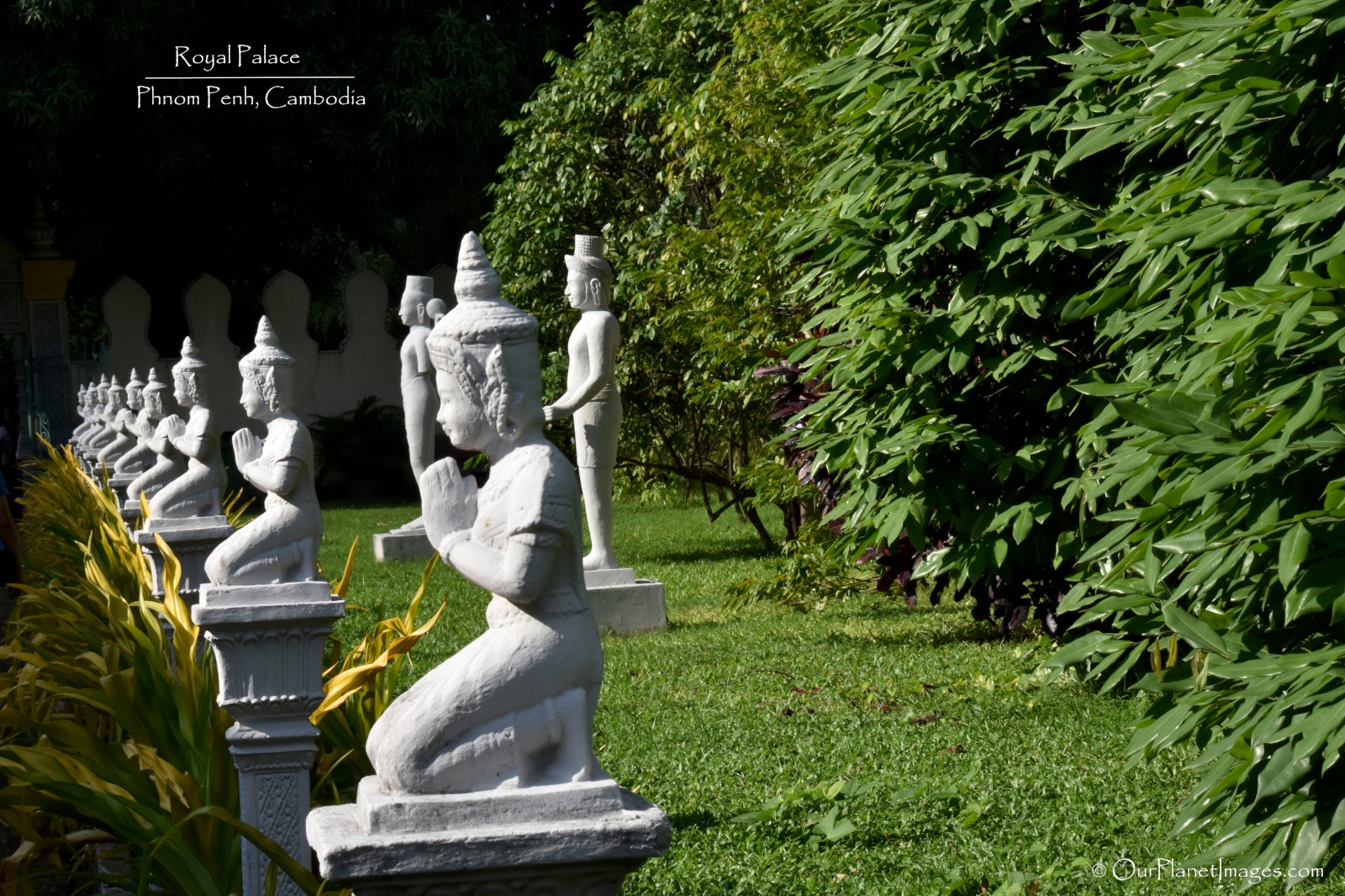

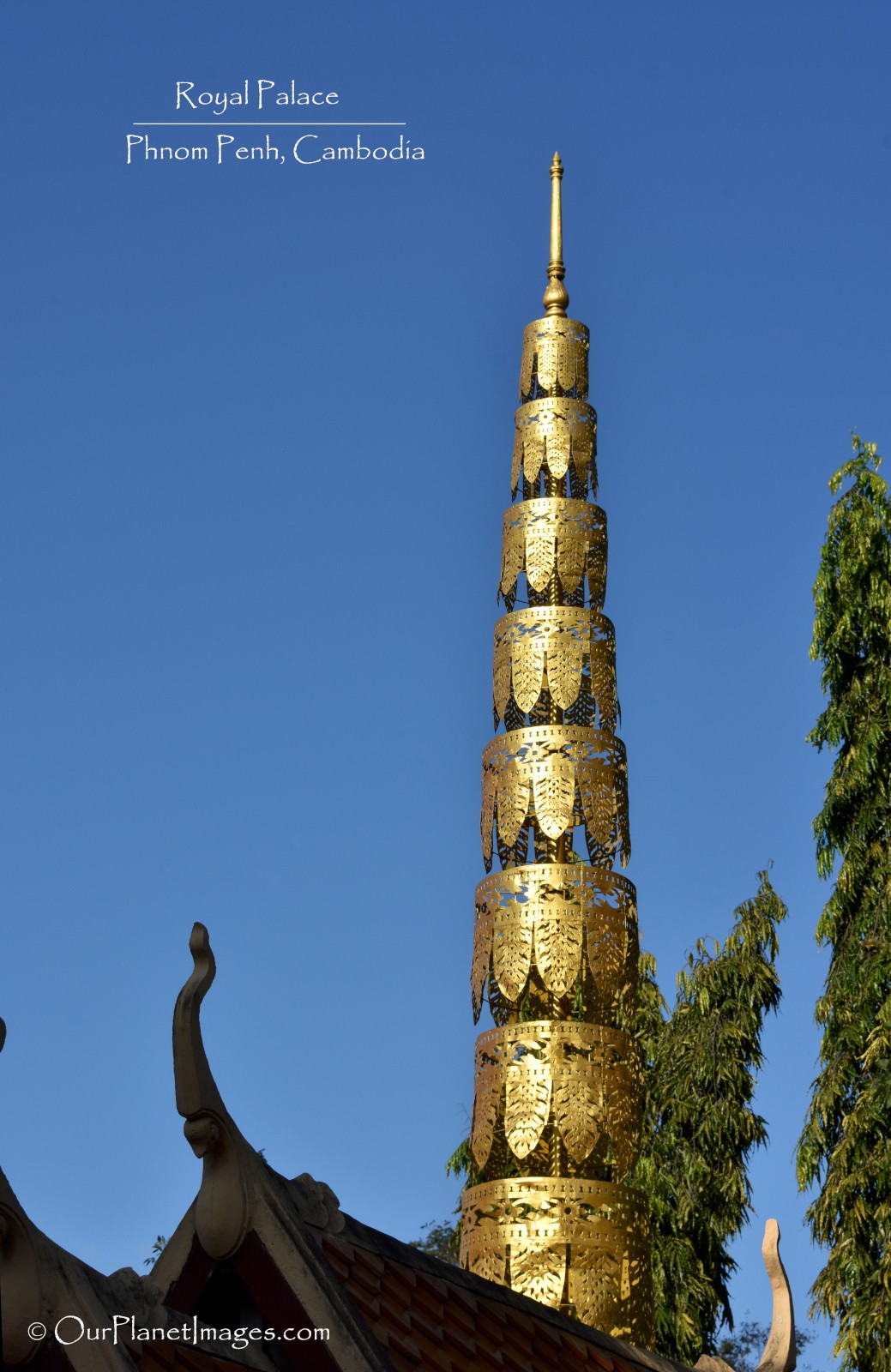
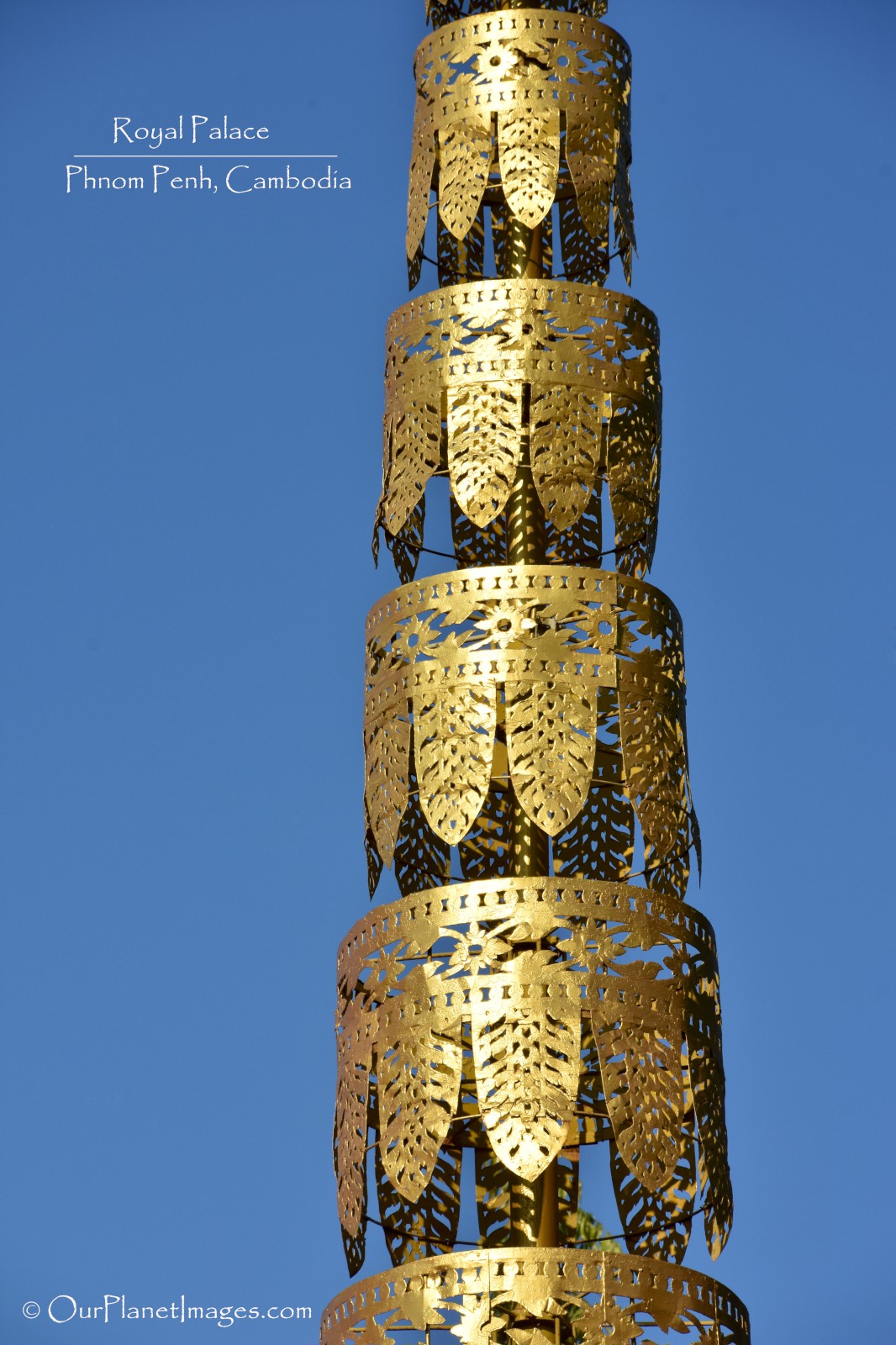
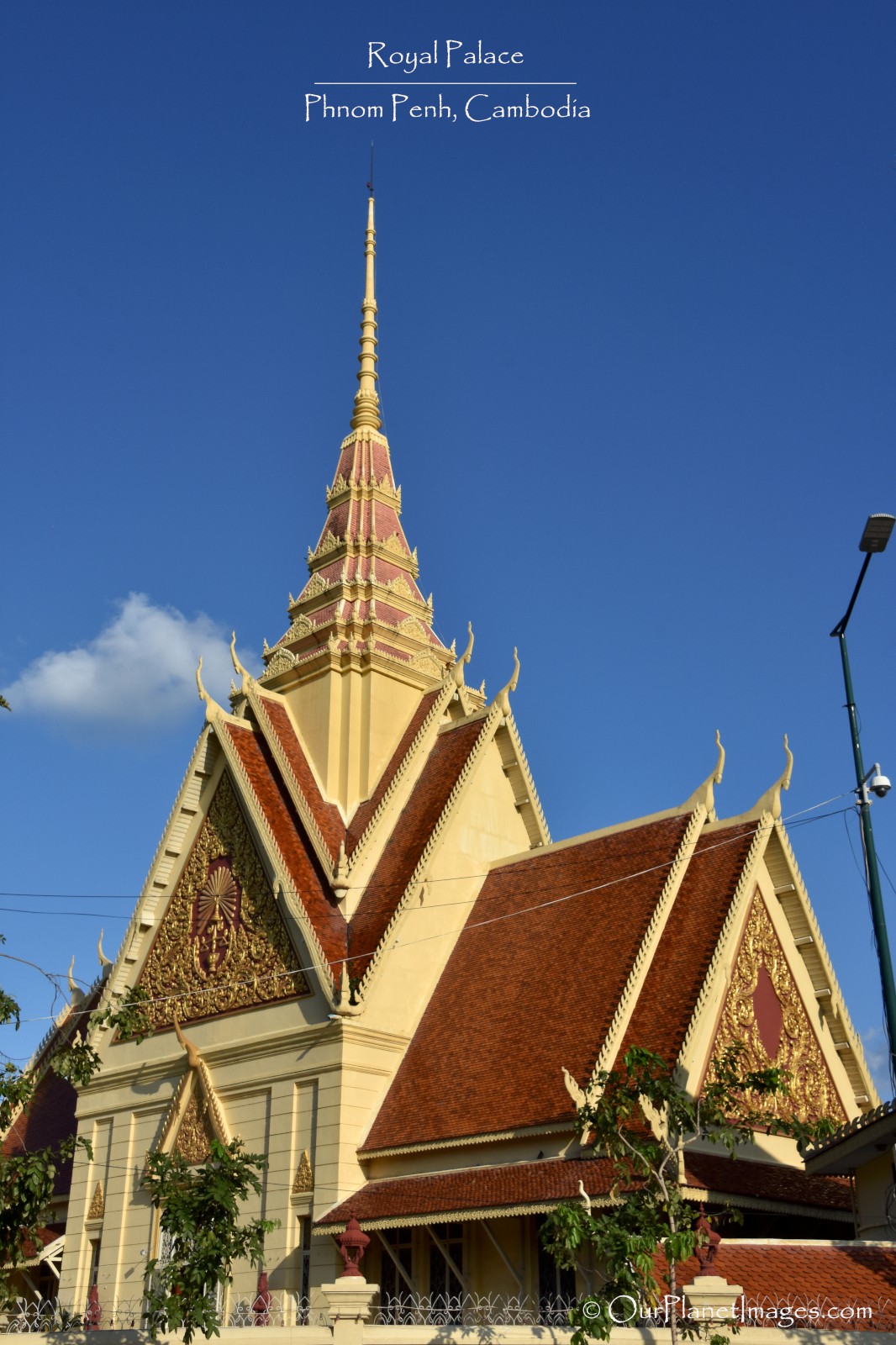
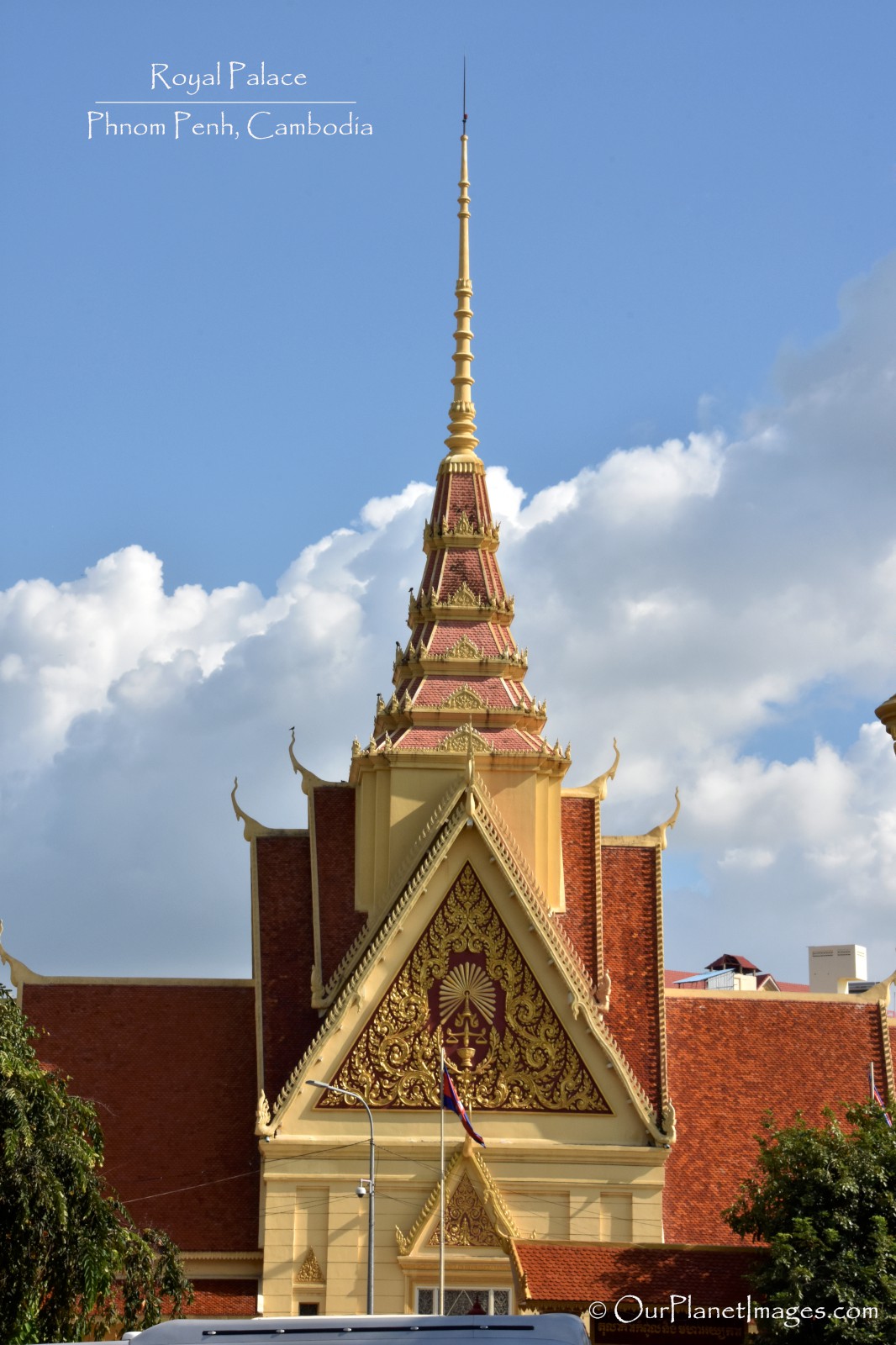
The Dust on my Shoes
Angkor Wat is the only thing that most people know about Cambodia but there are always hidden treasures that may not be at the top of everyone’s bucket list. Try to schedule a little down time in places that you don’t know a lot about because there is always something that you may be glad that you took the time to discover.
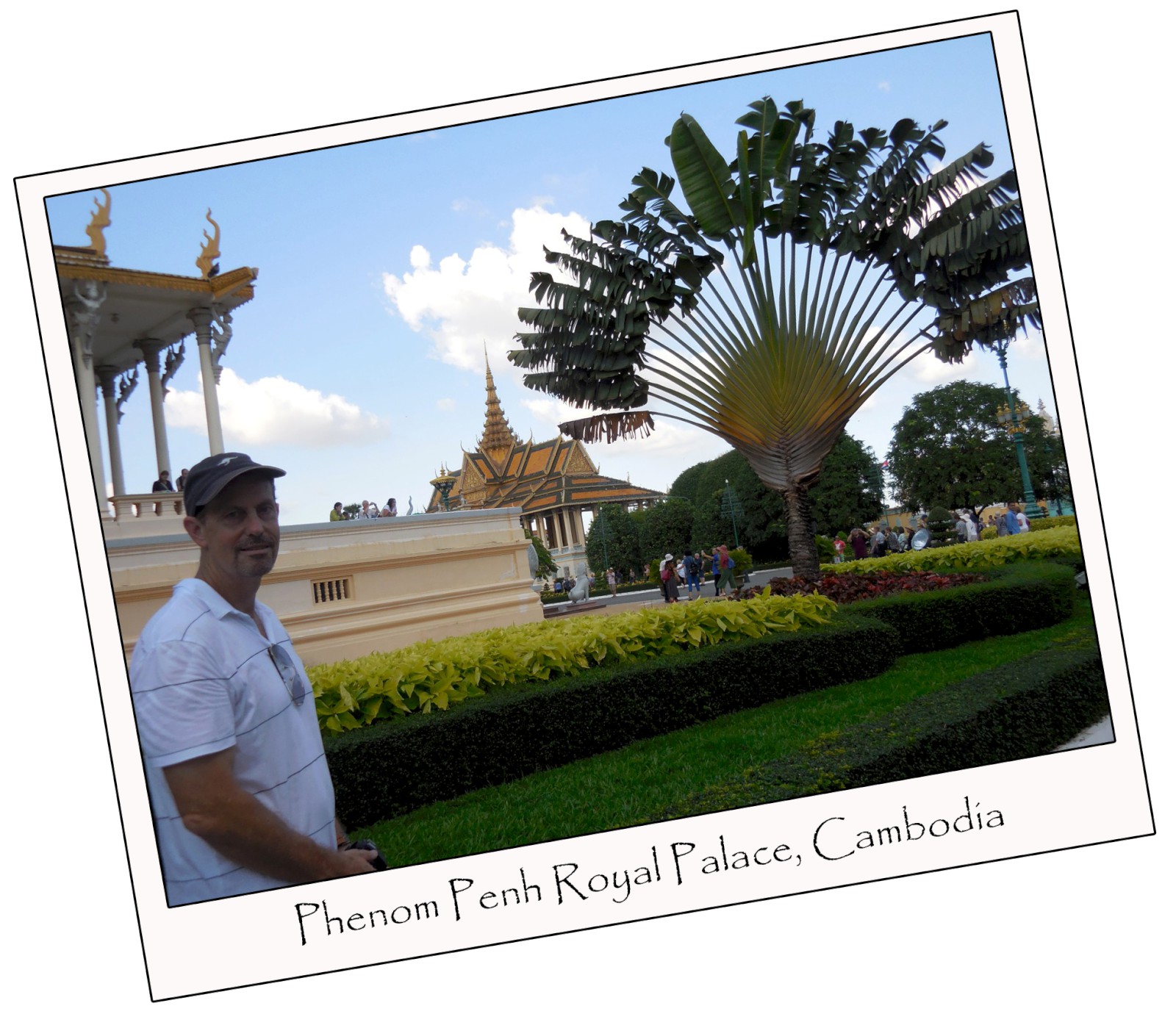
The Royal Palace in Phenom Penh was one of my unexpected highlight during my visit to Cambodia and it is something that I would classify as a must see when visiting Phenom Penh. The Royal Palace is not the most over the top palace that I have seen in my travels but it is very nice with colorfully designed buildings in the Khmer style architecture and very well maintained gardens throughout the palace grounds.
Some of the designs are things that I had not seen before like the tallest spire on the Throne Hall and the unique gold leaf designs on the gables of the buildings.
Related Posts
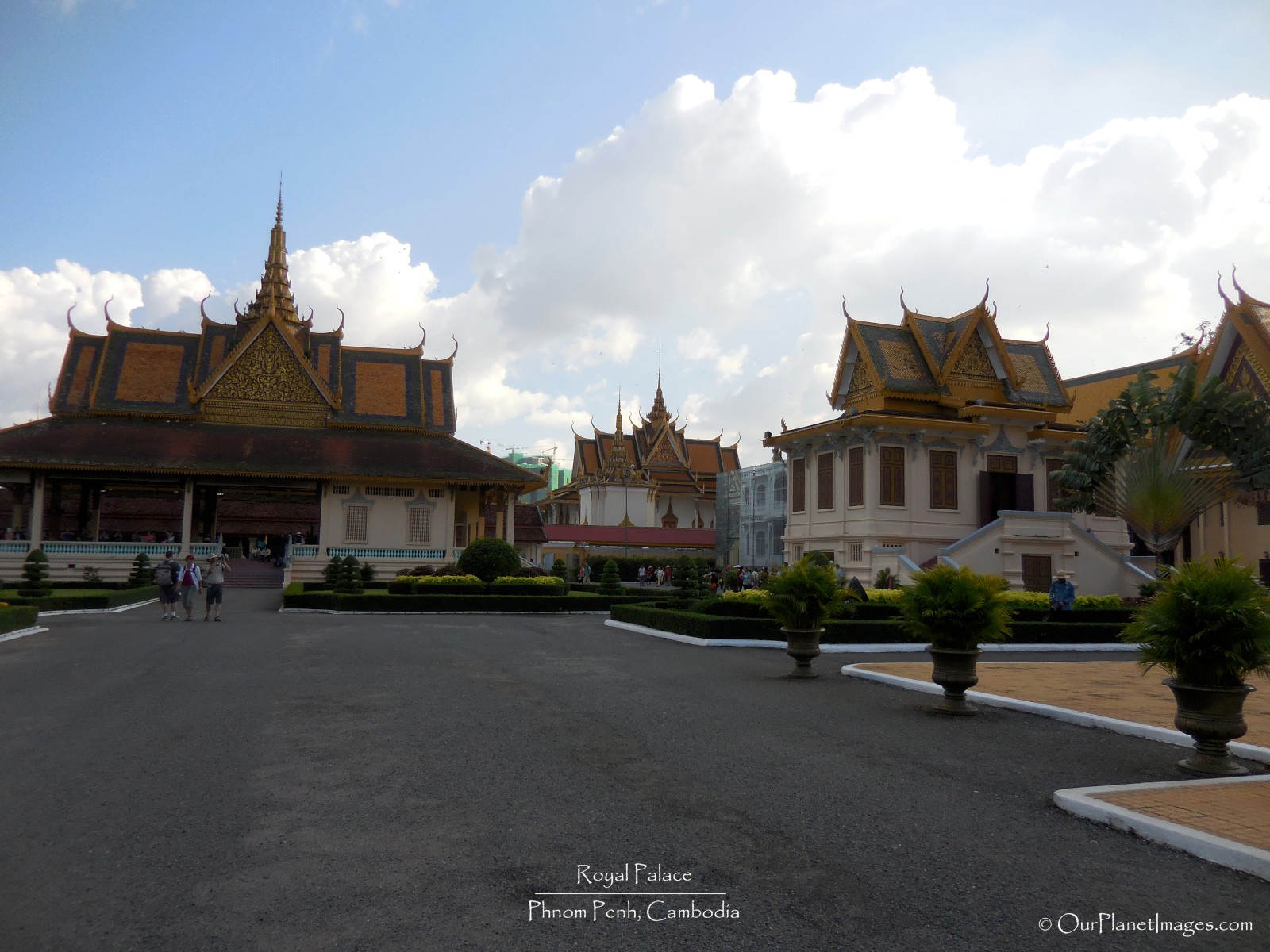
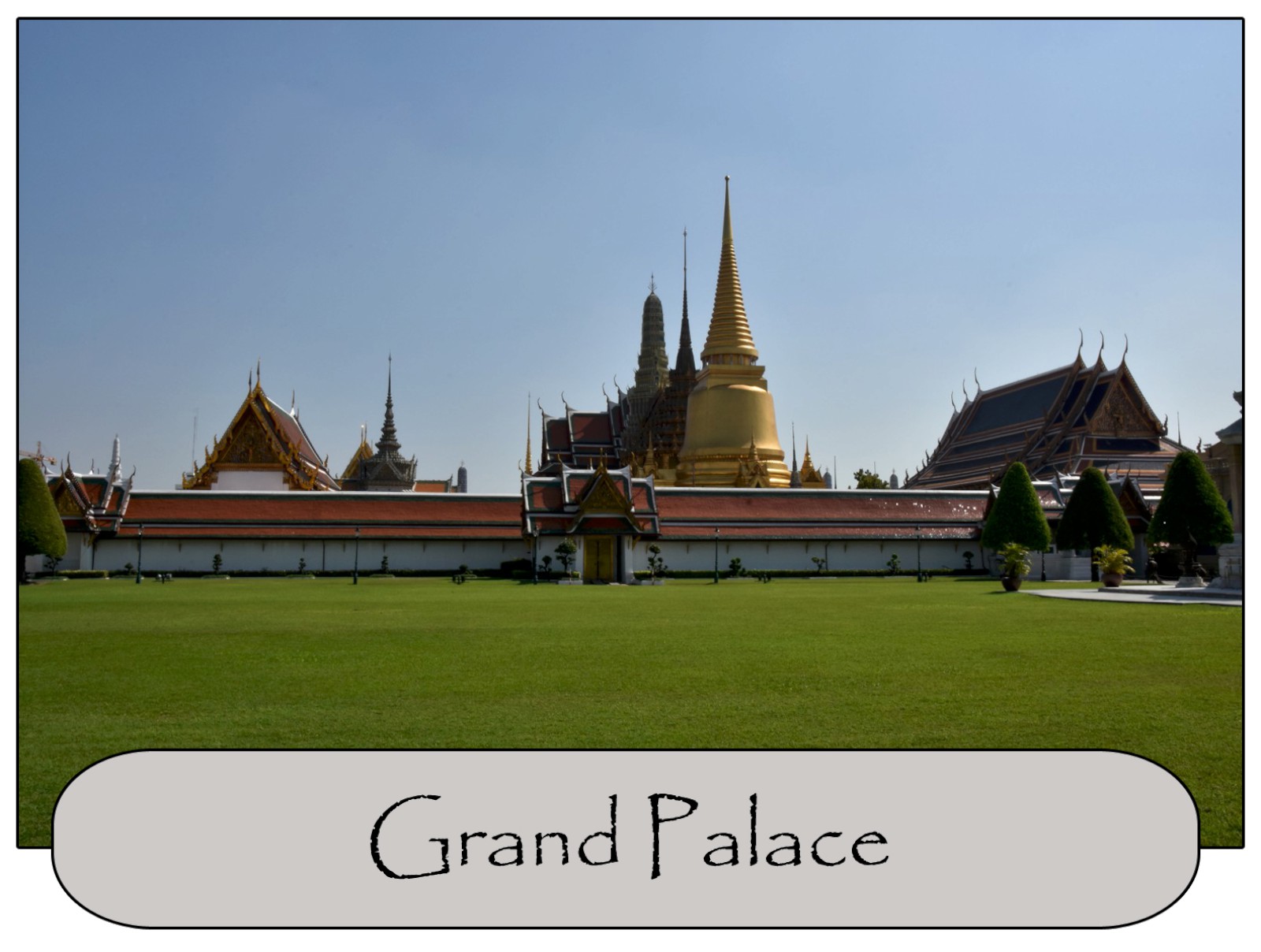
There are so many interesting sites and experiences in Cambodia in addition to Angkor Wat. The country, culture and history are very interesting.
Yes there are more things to see than Angkor Wat. I will have more posts on Cambodia in the future.